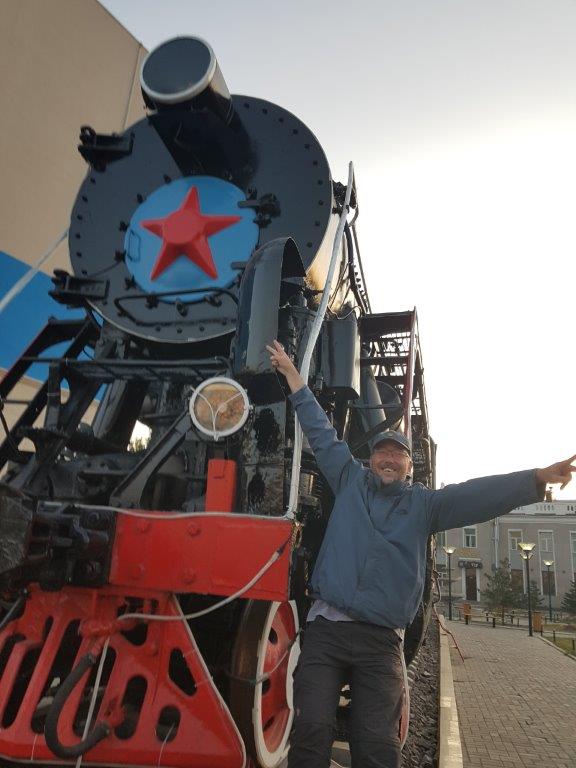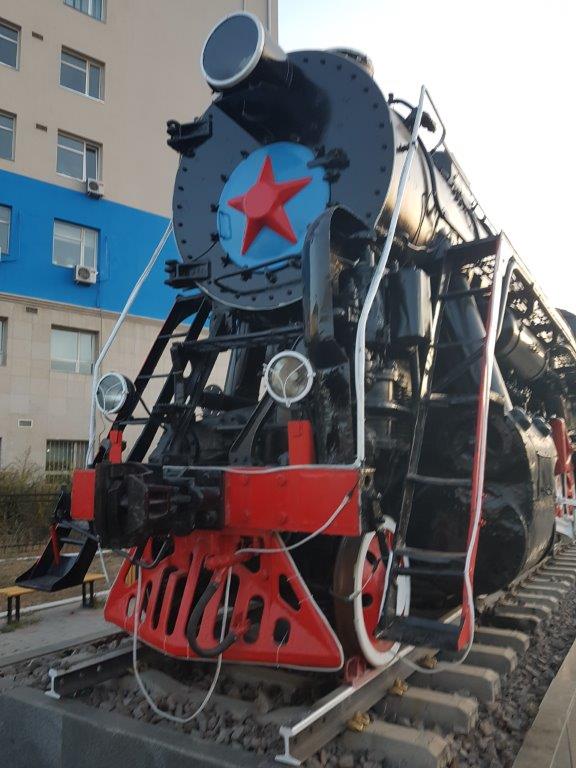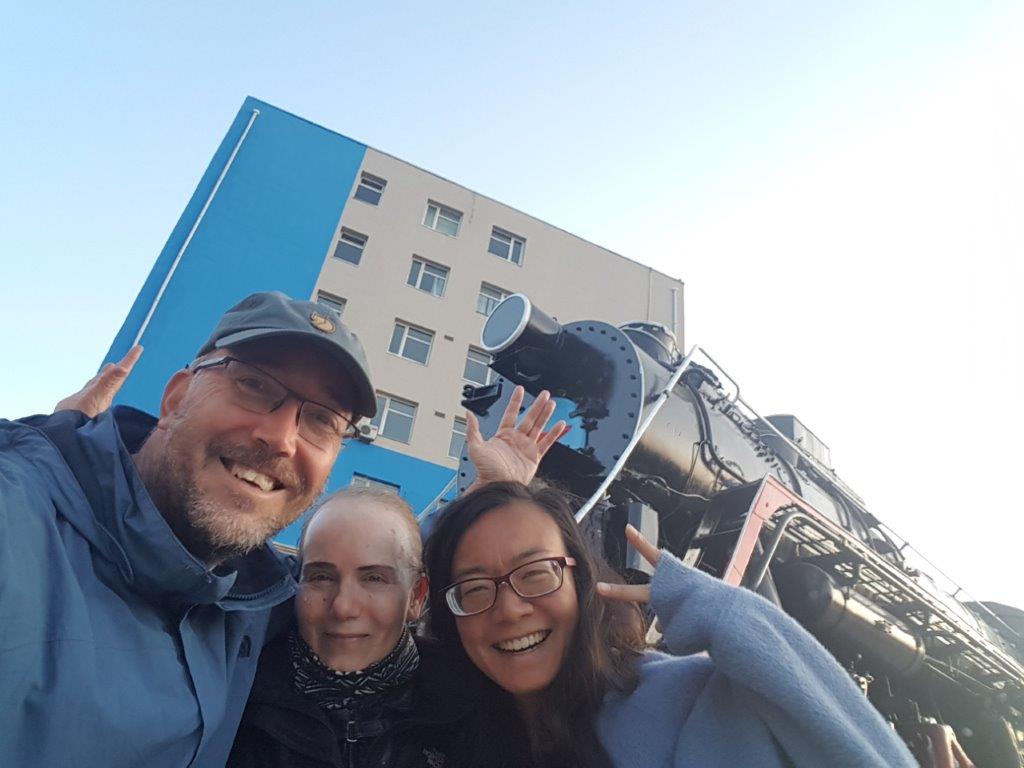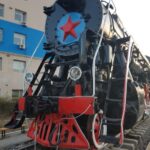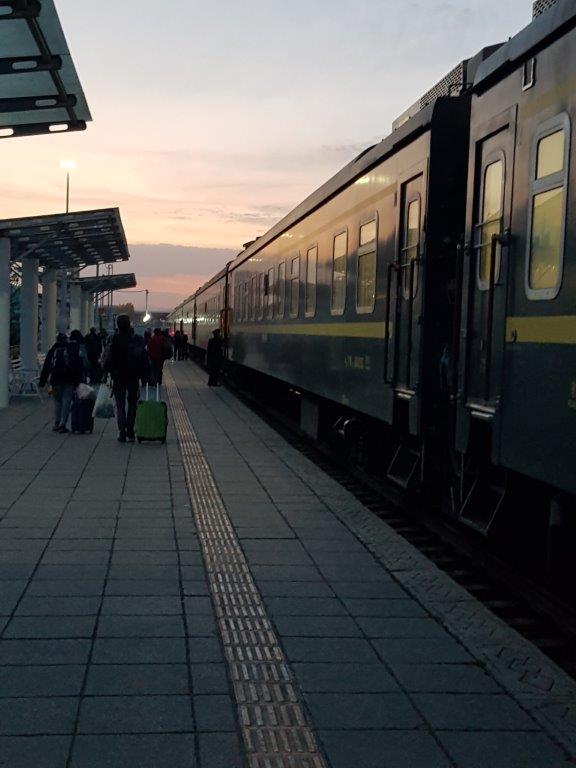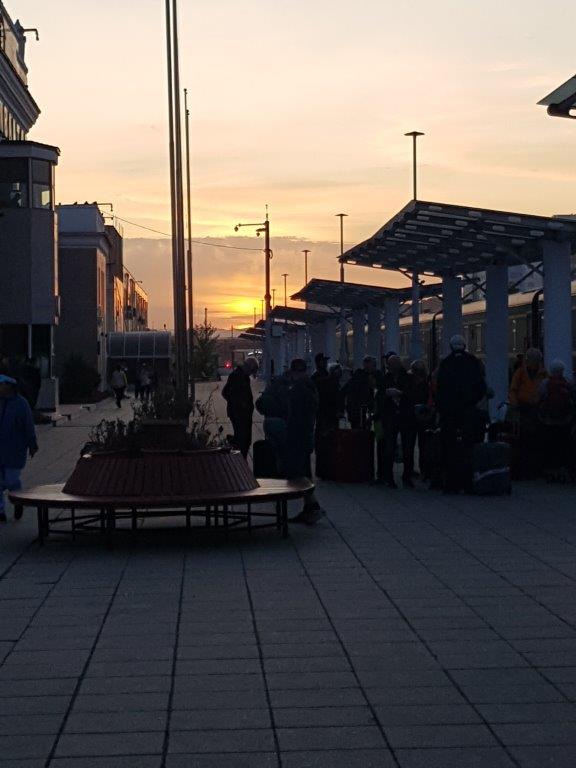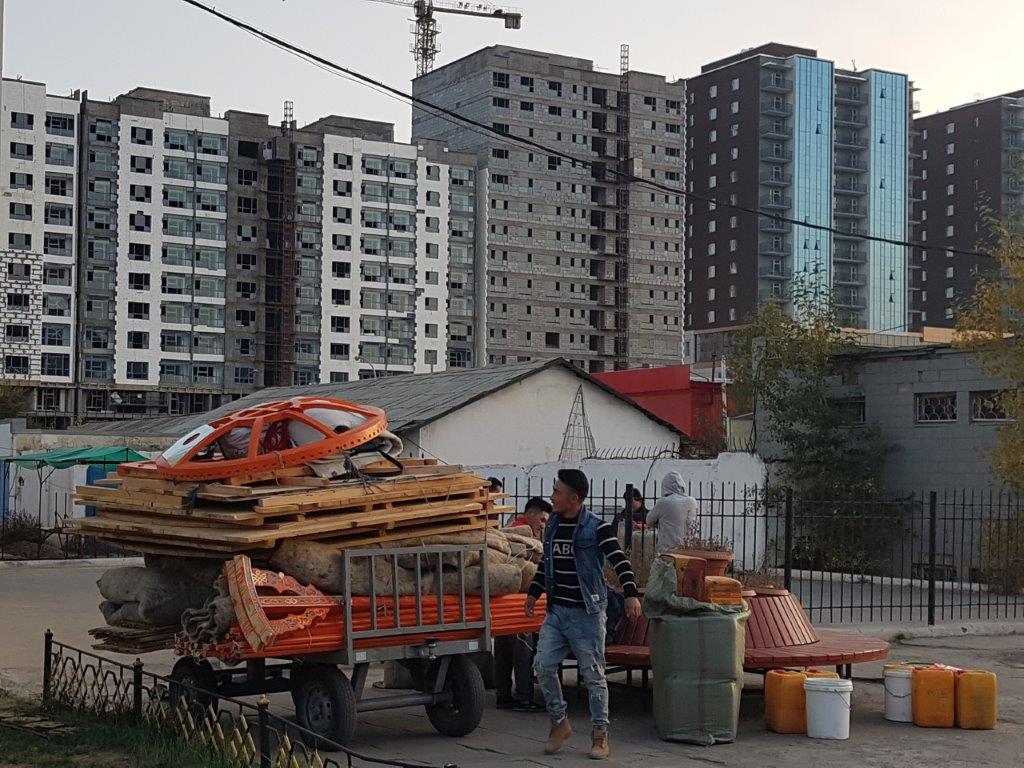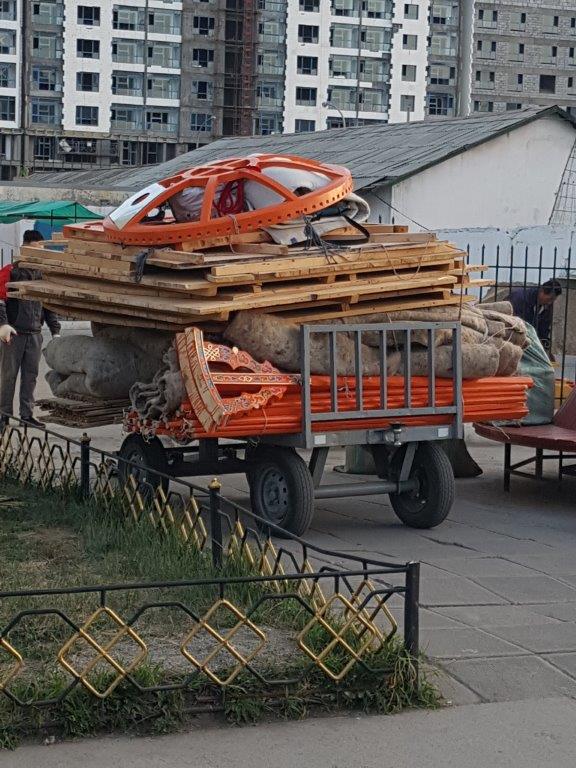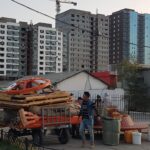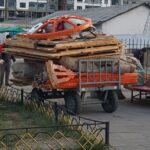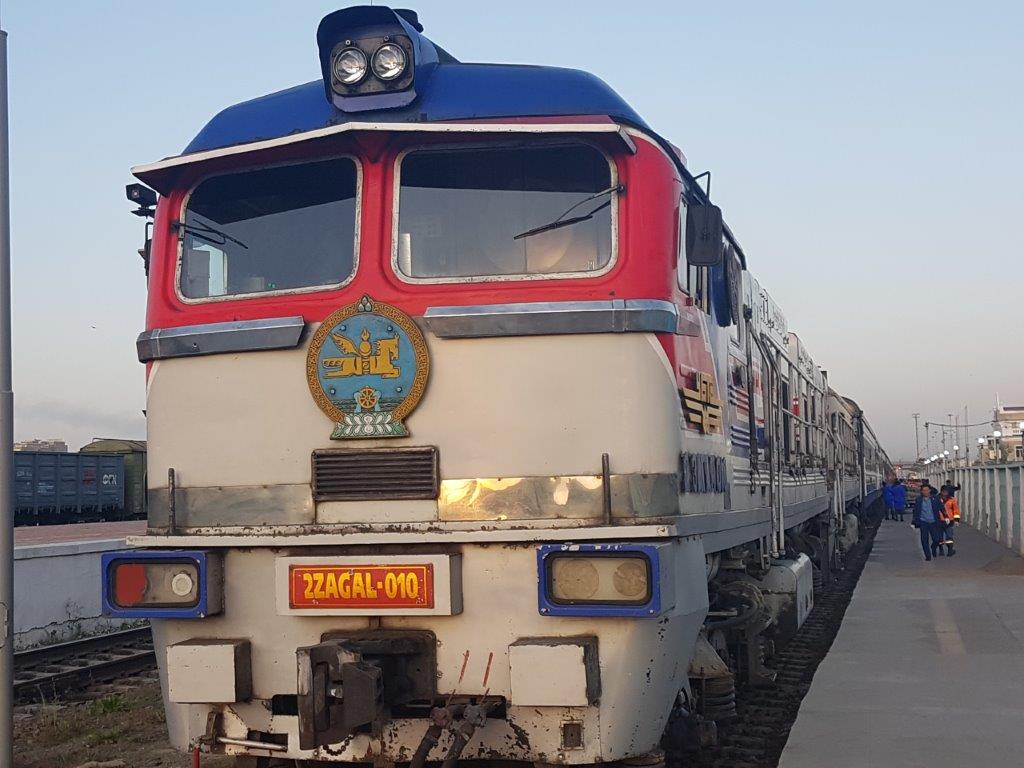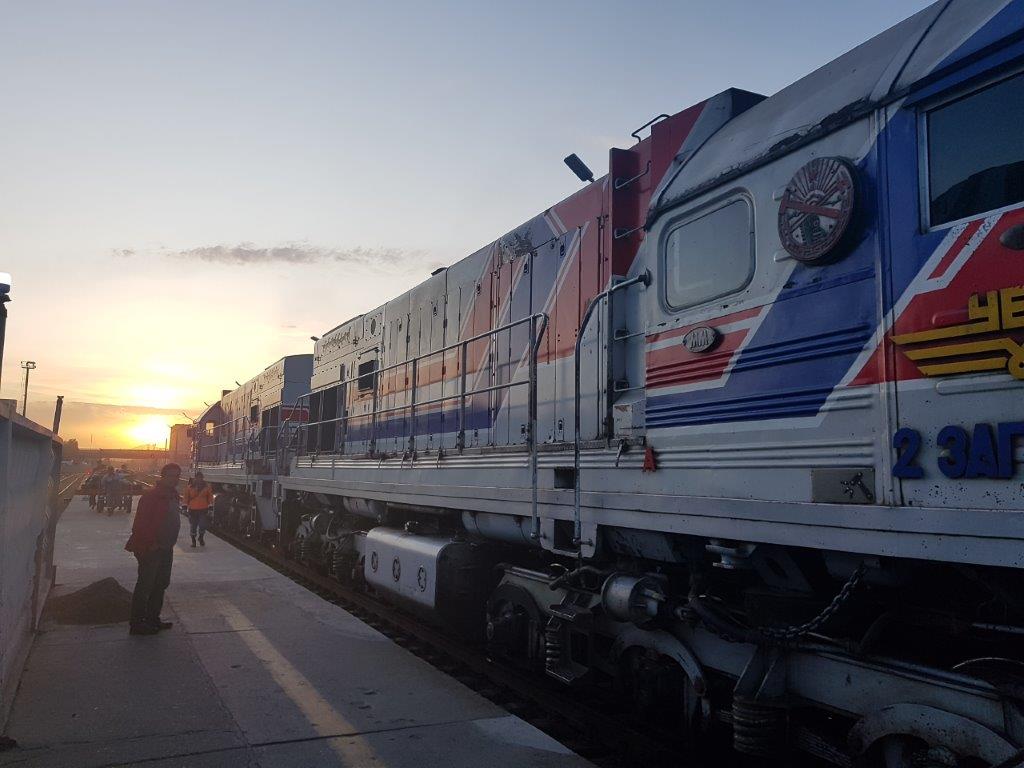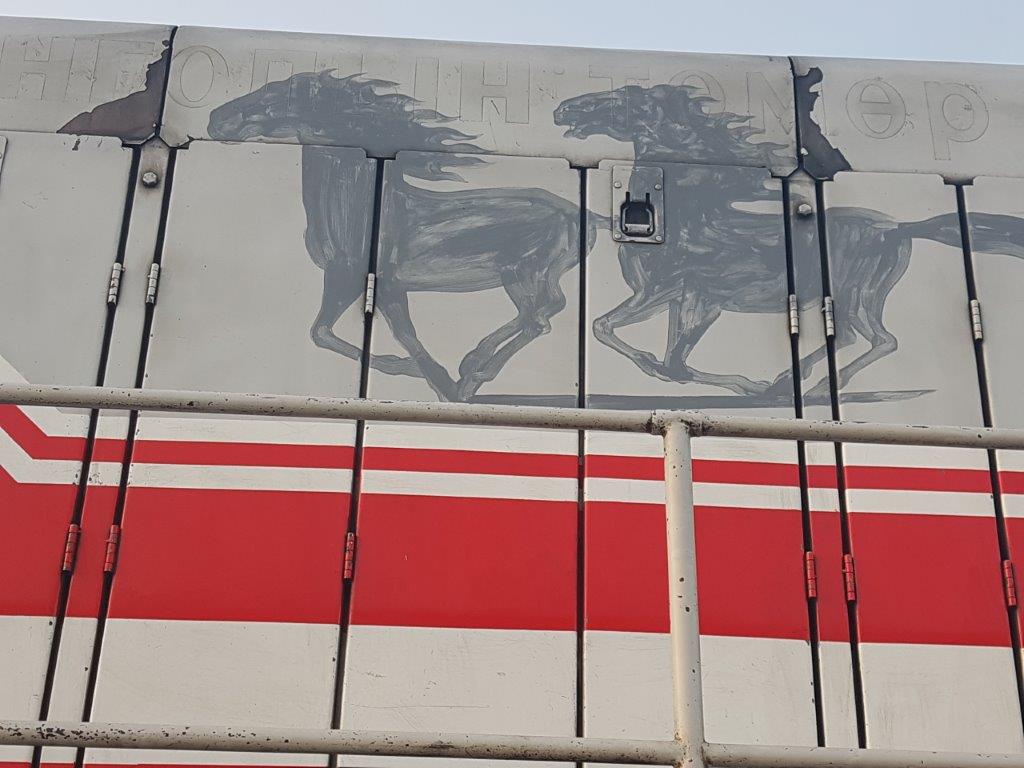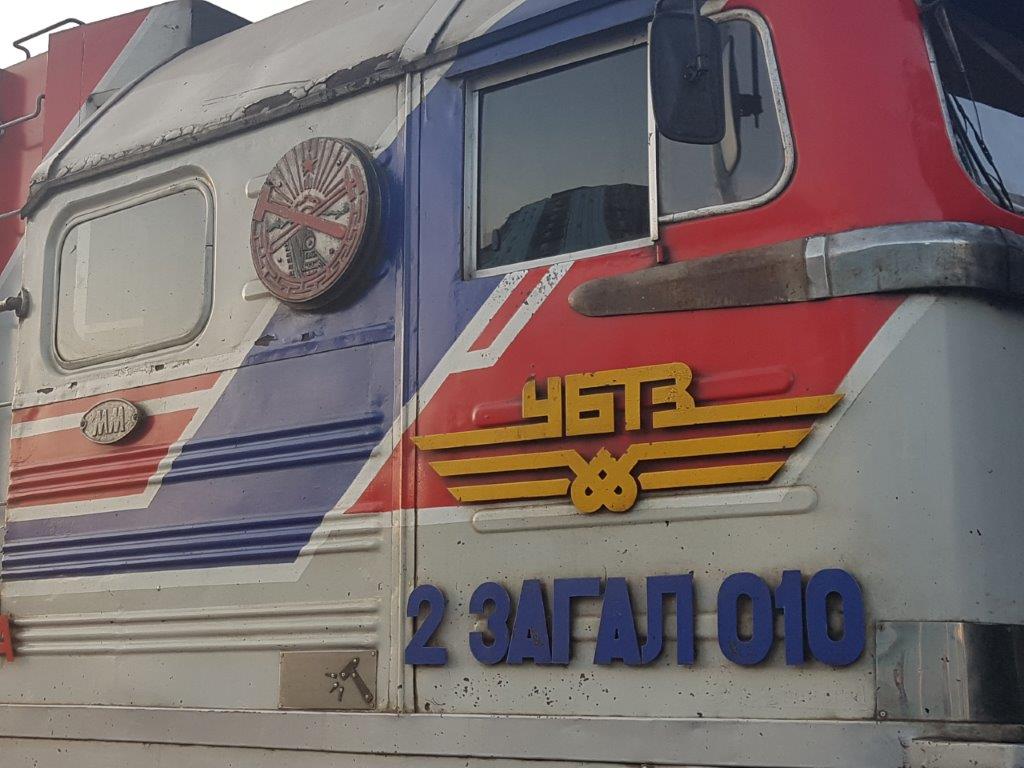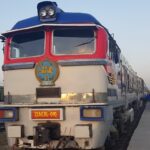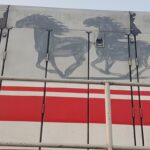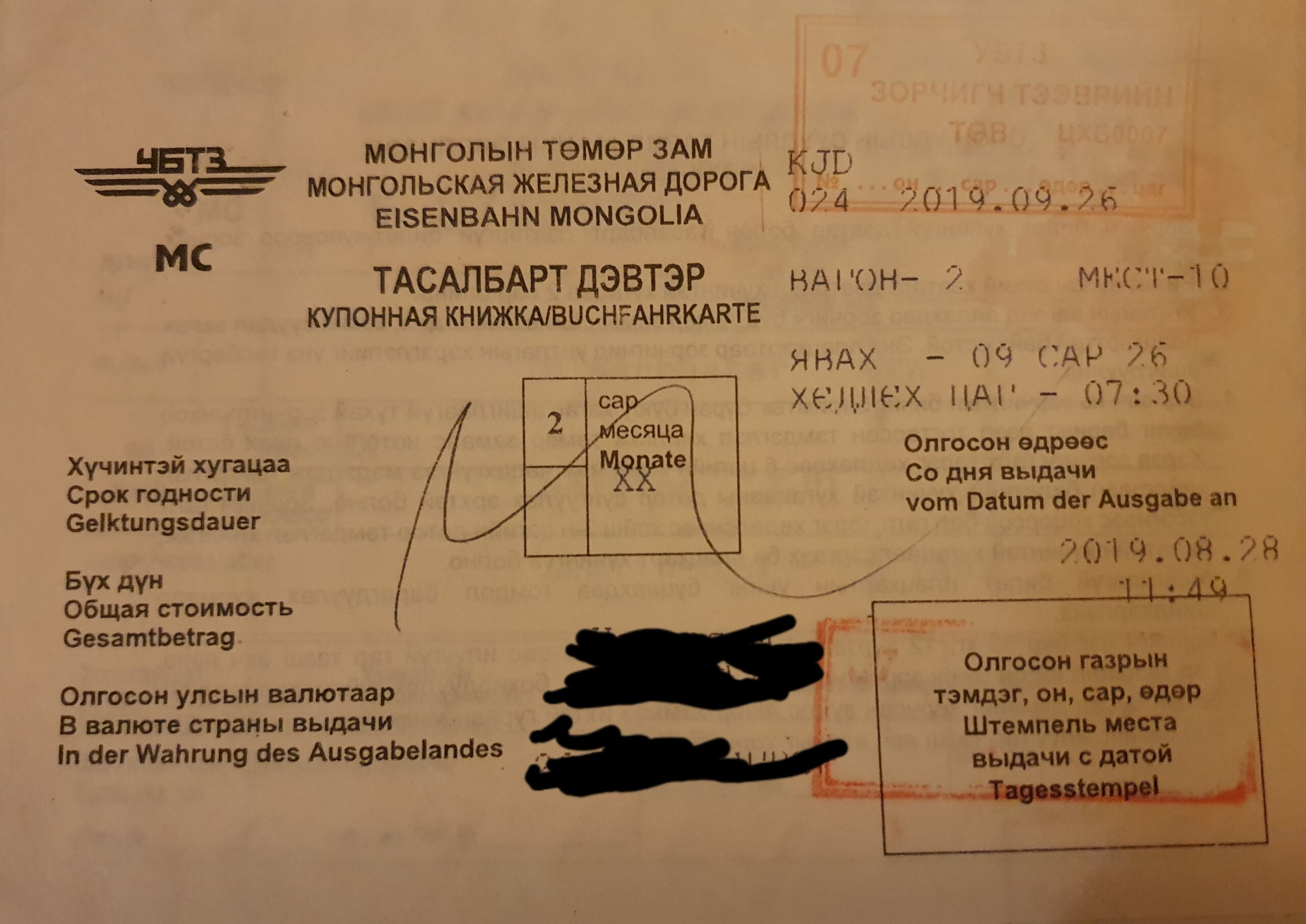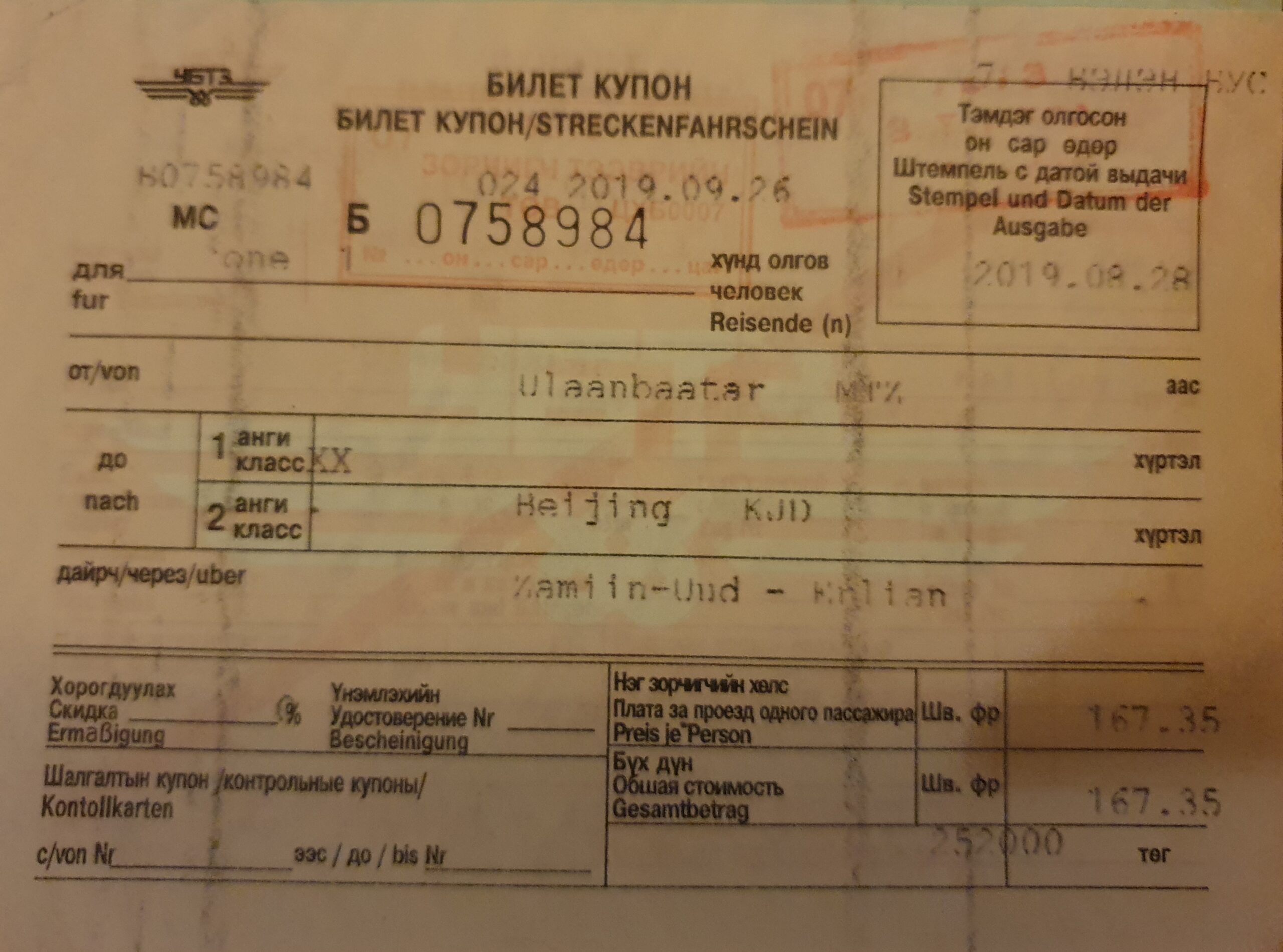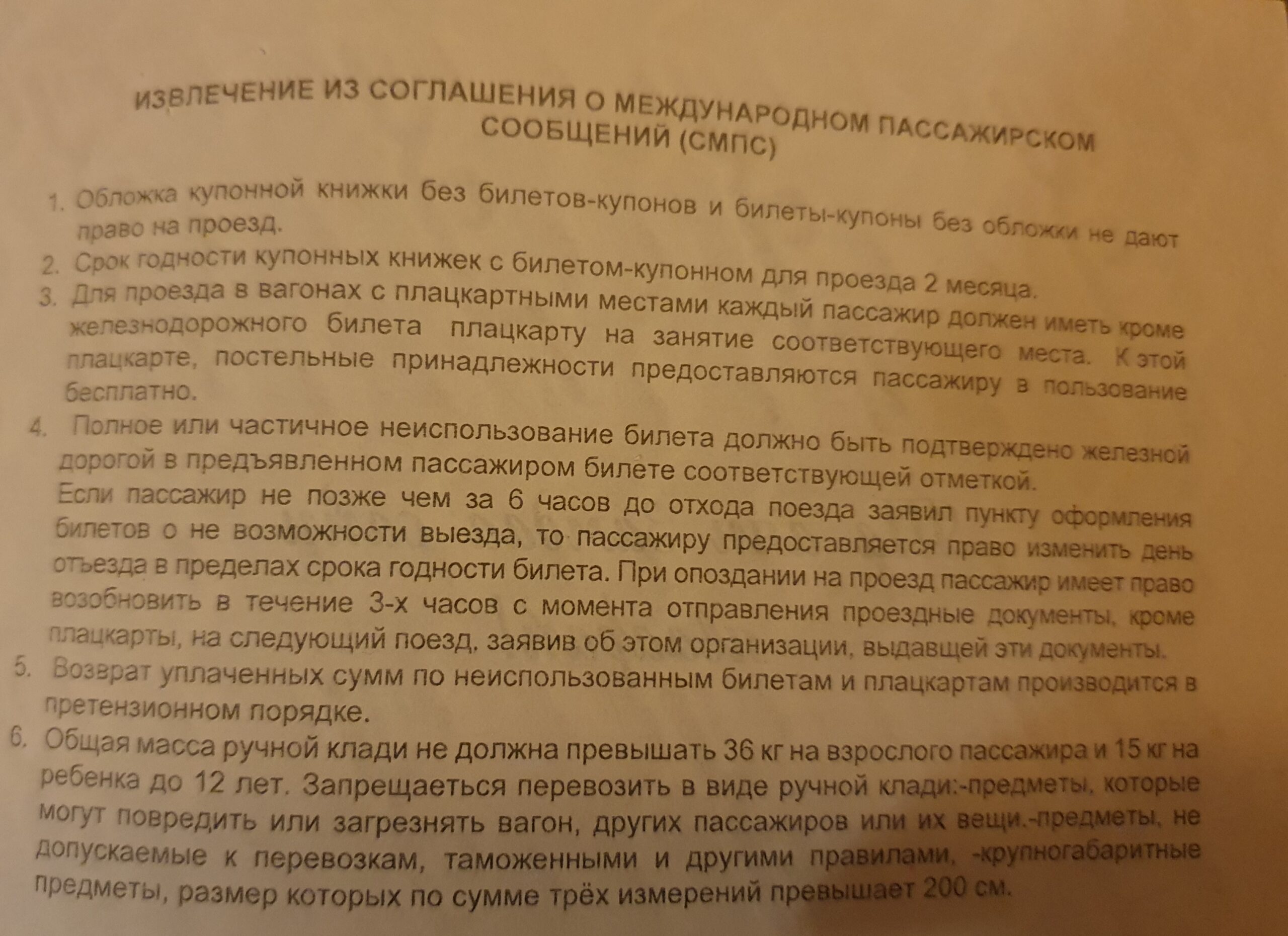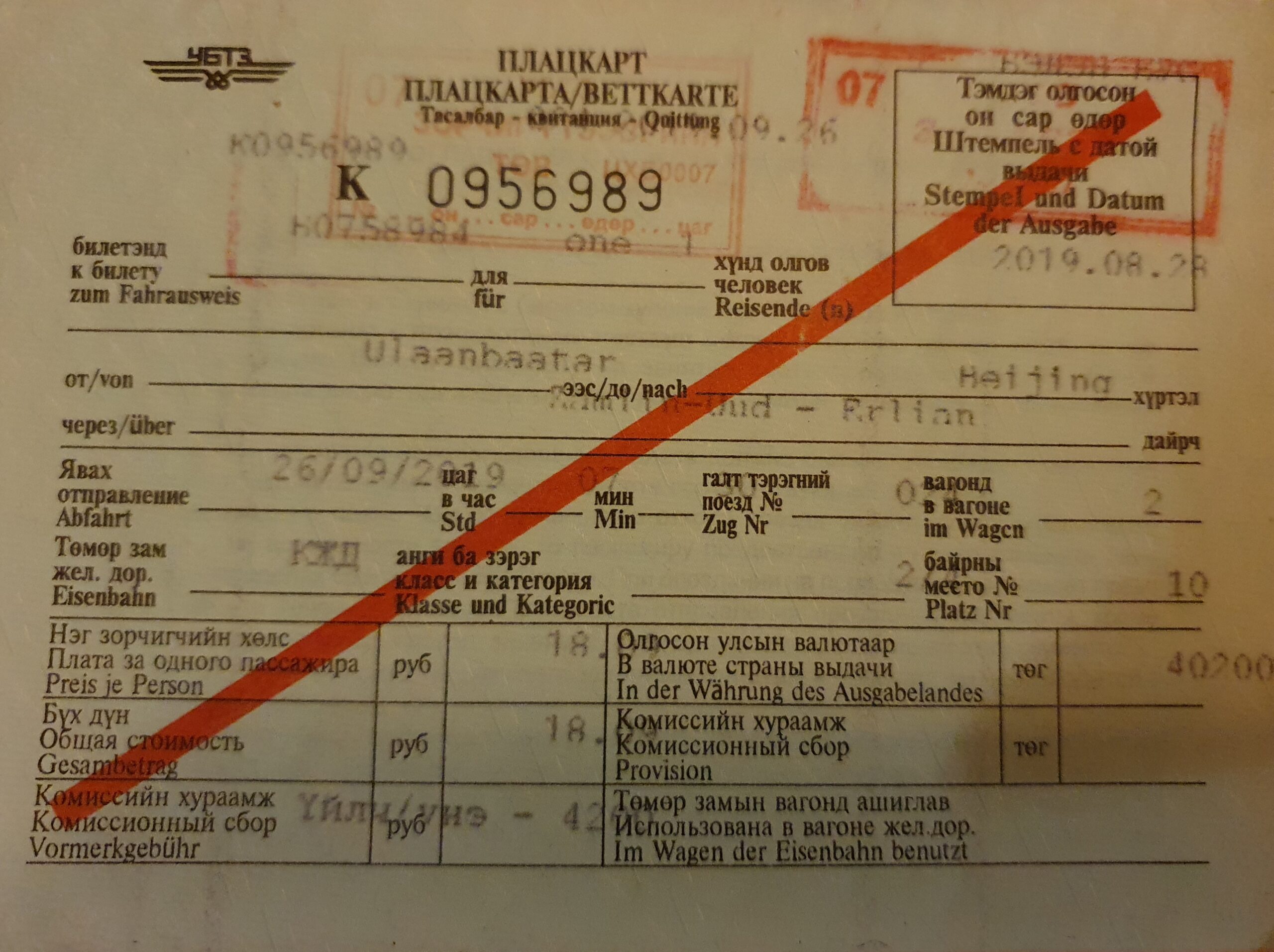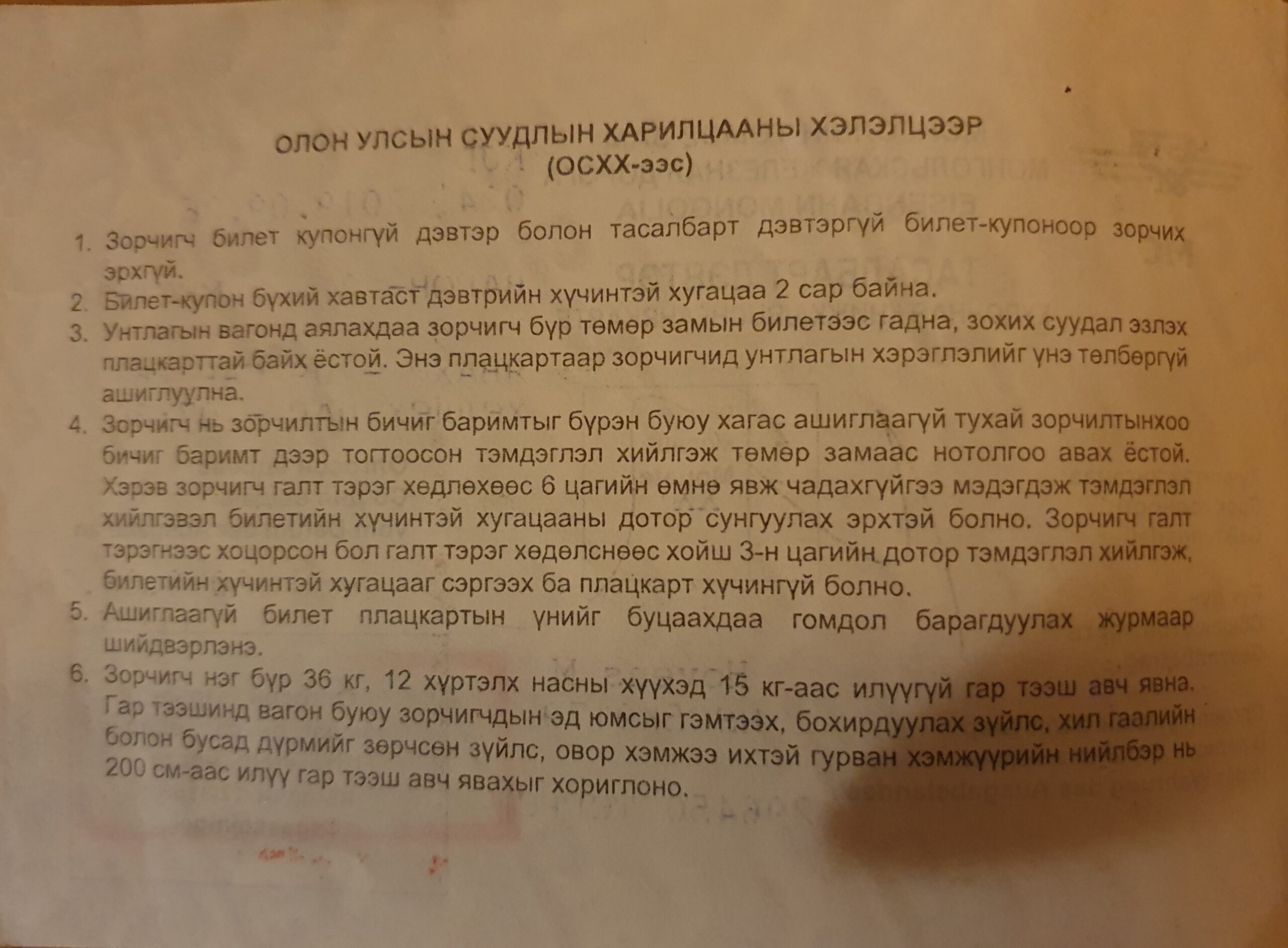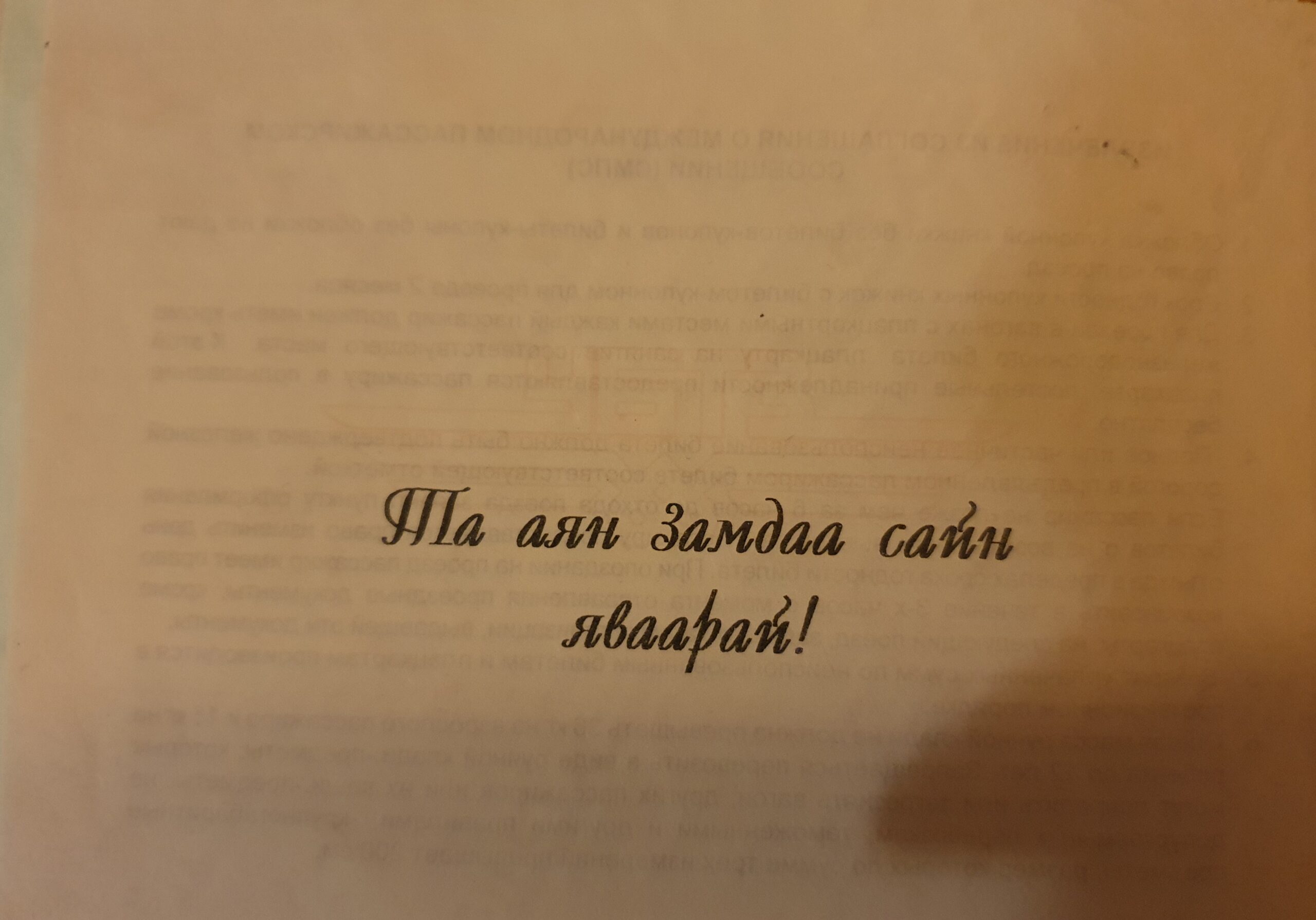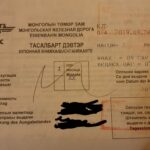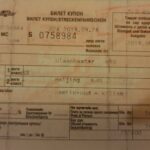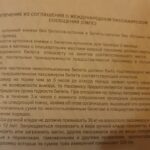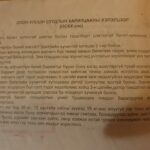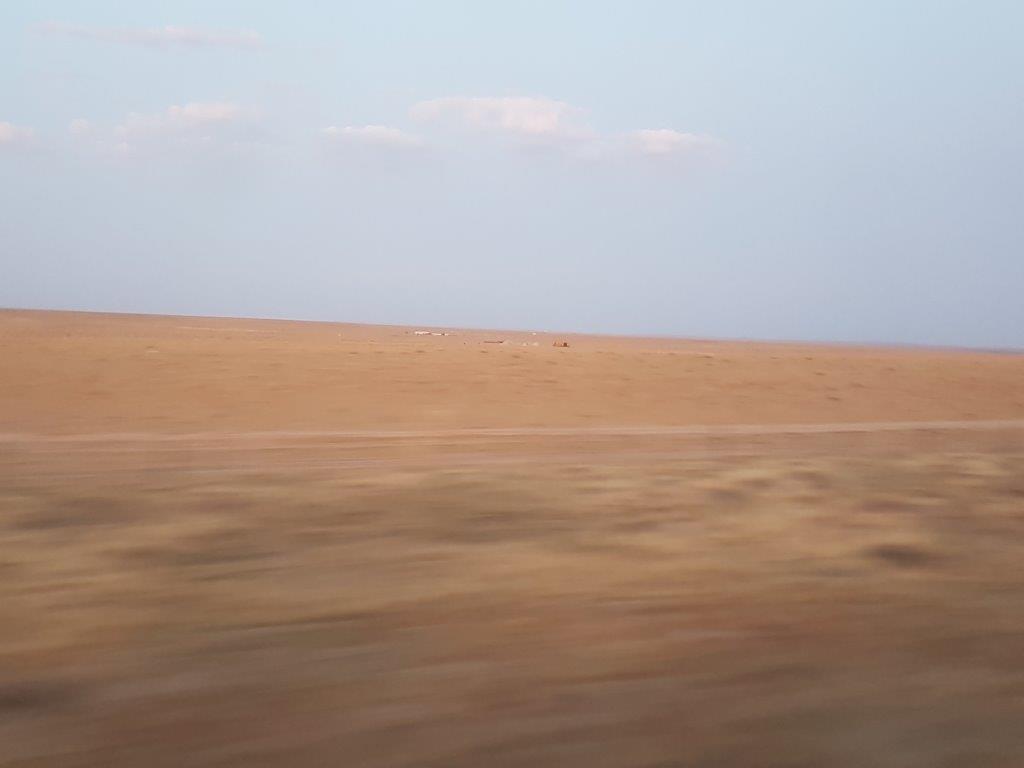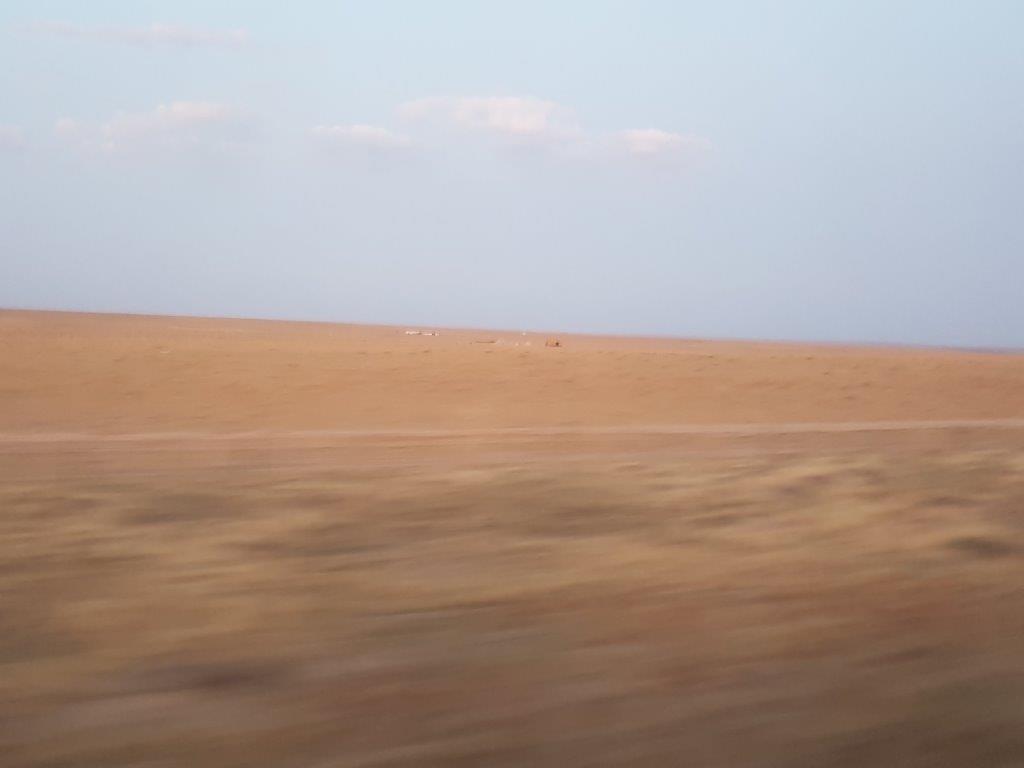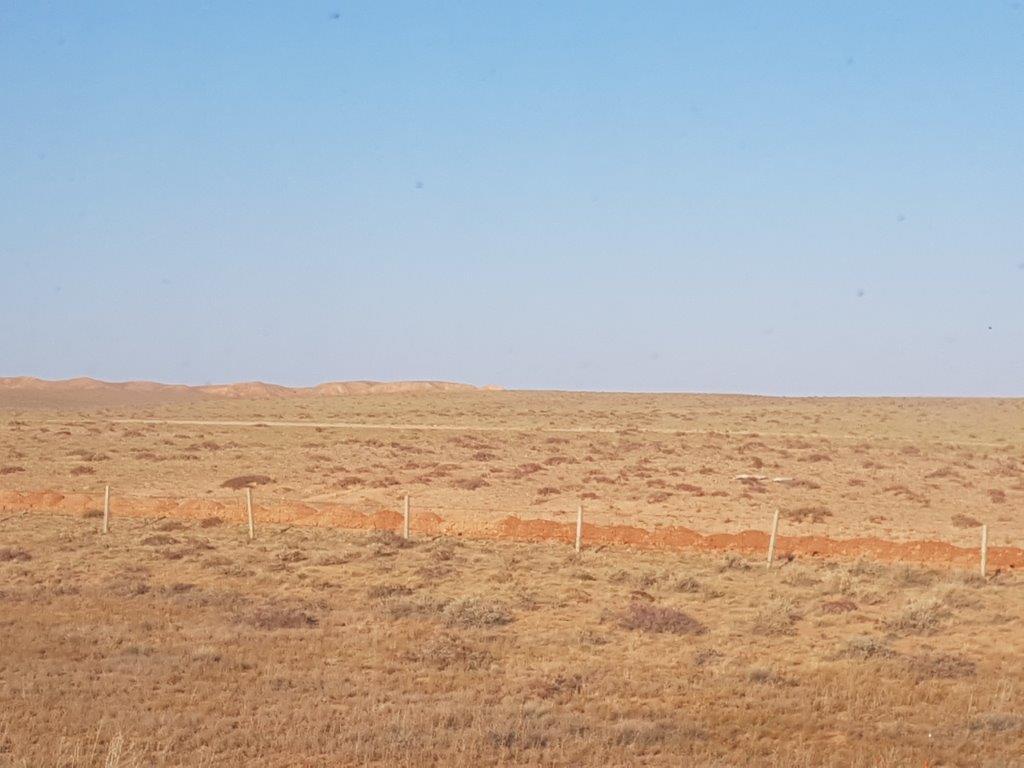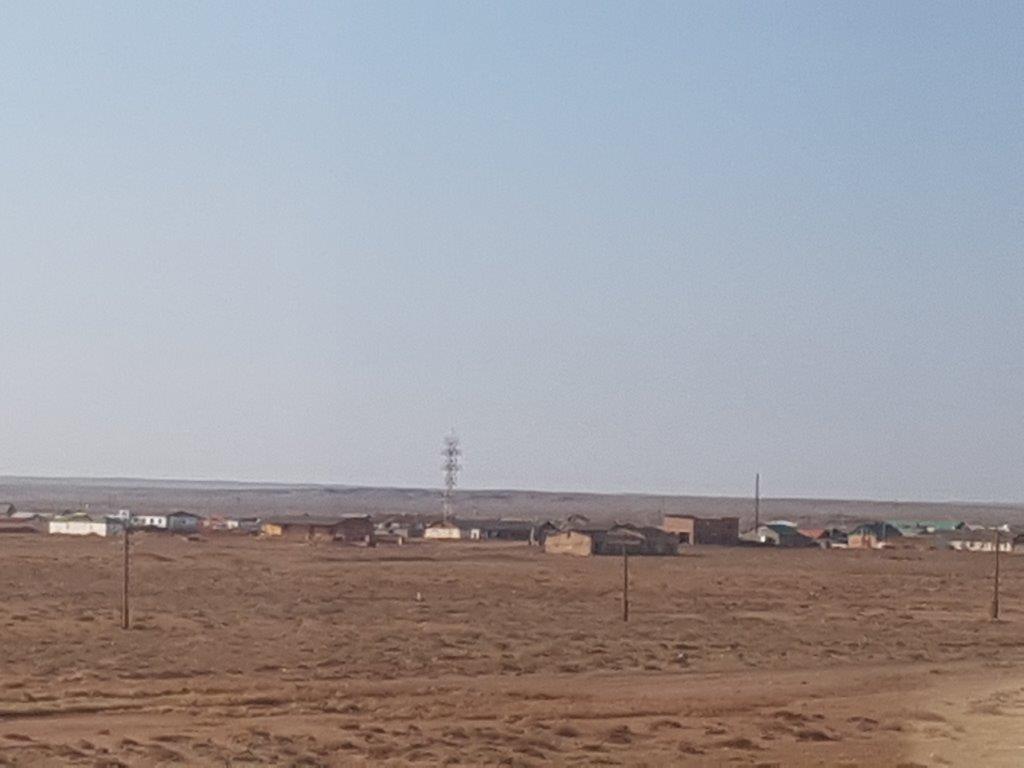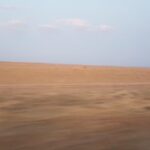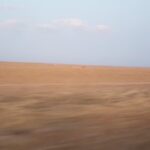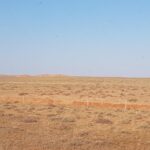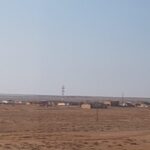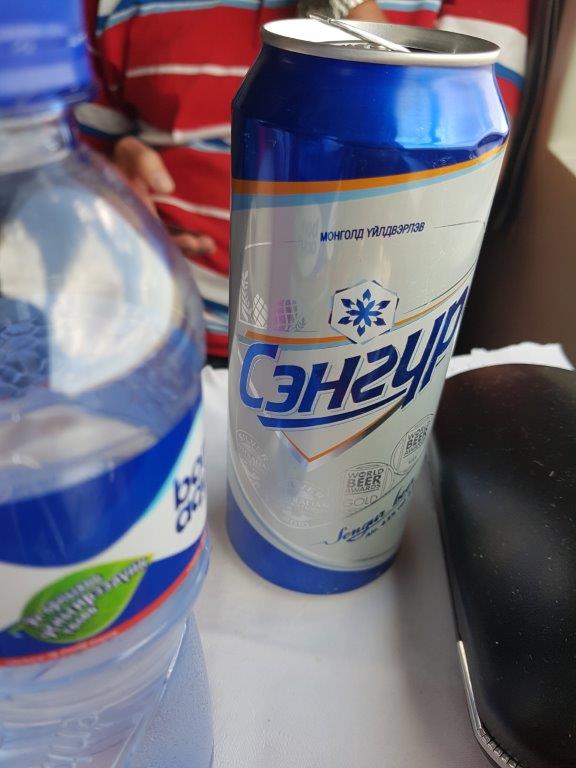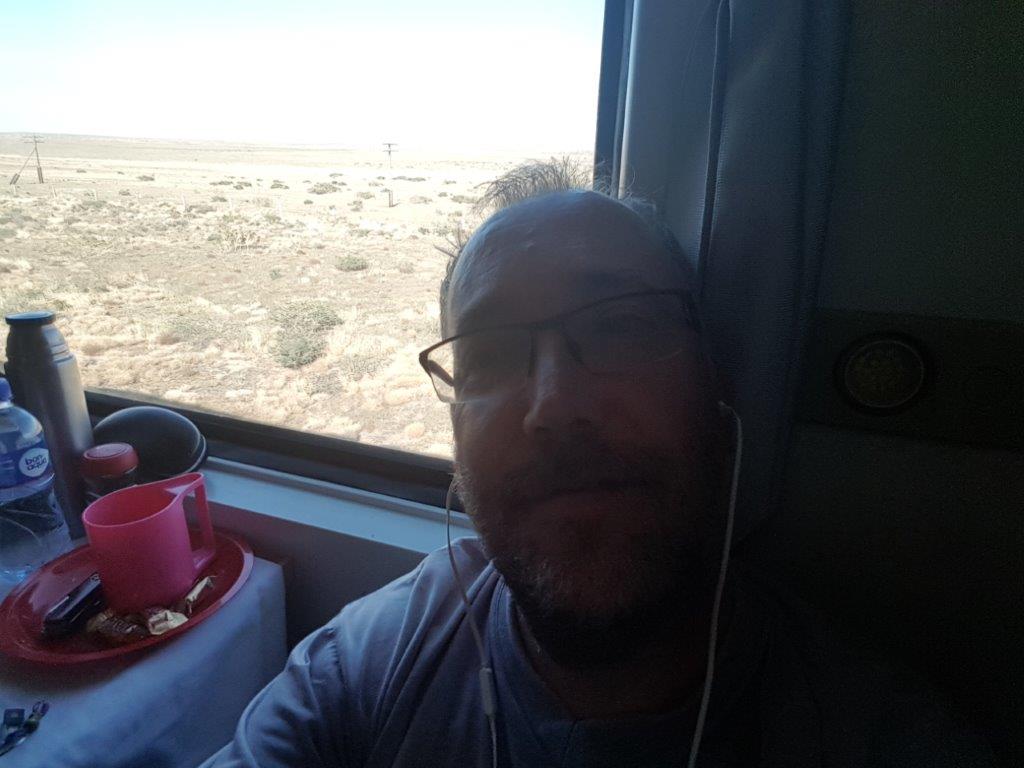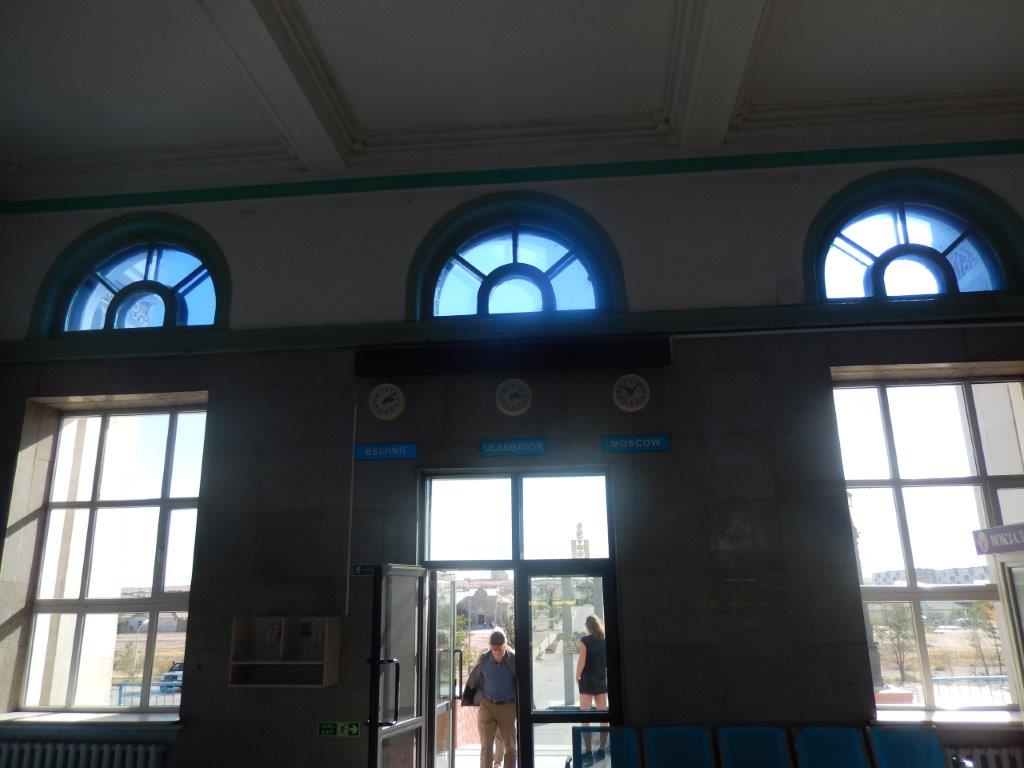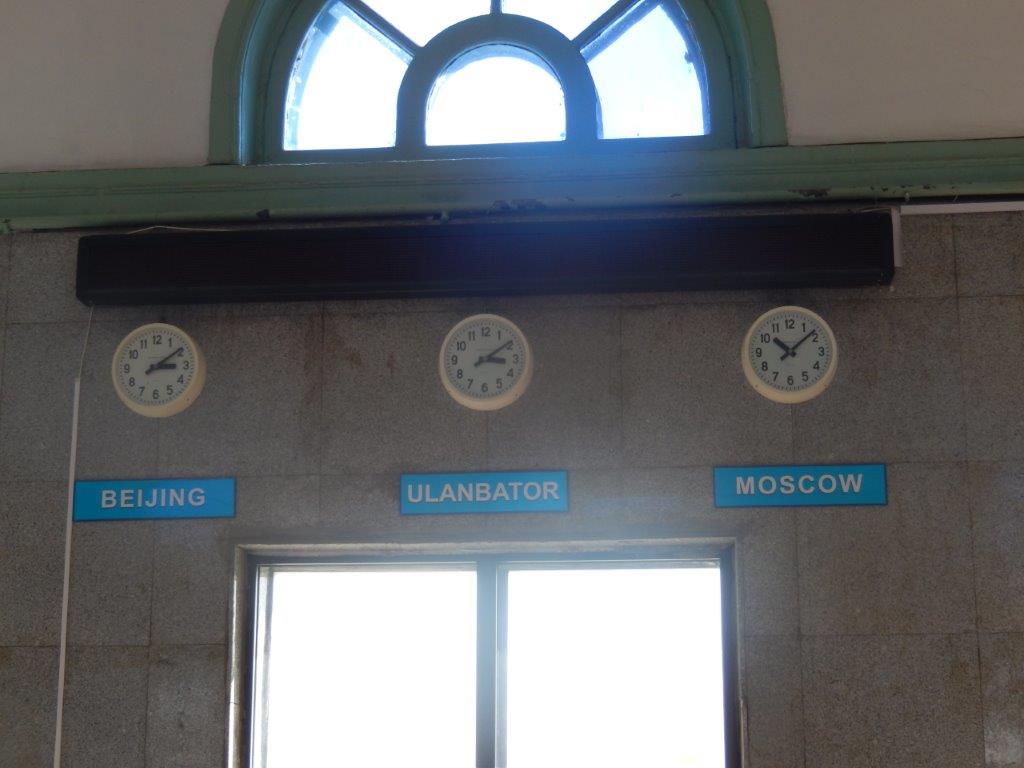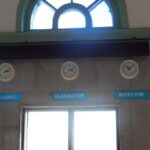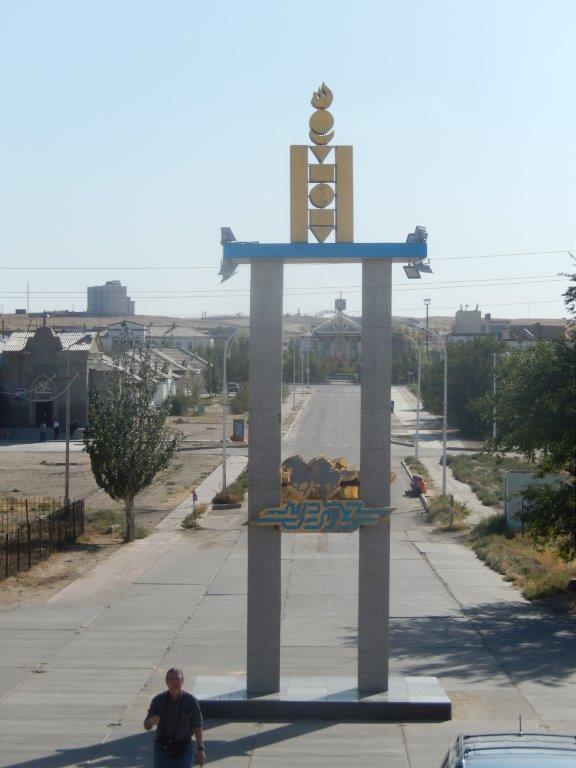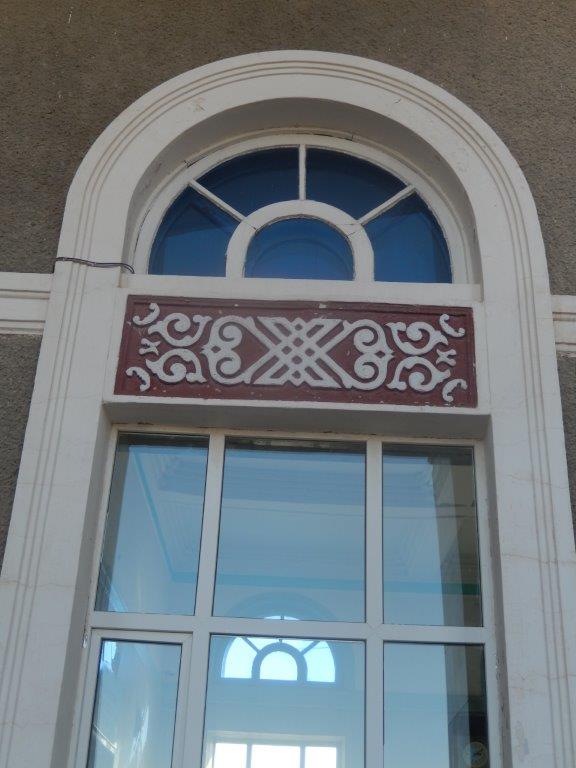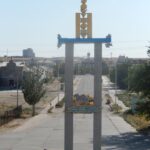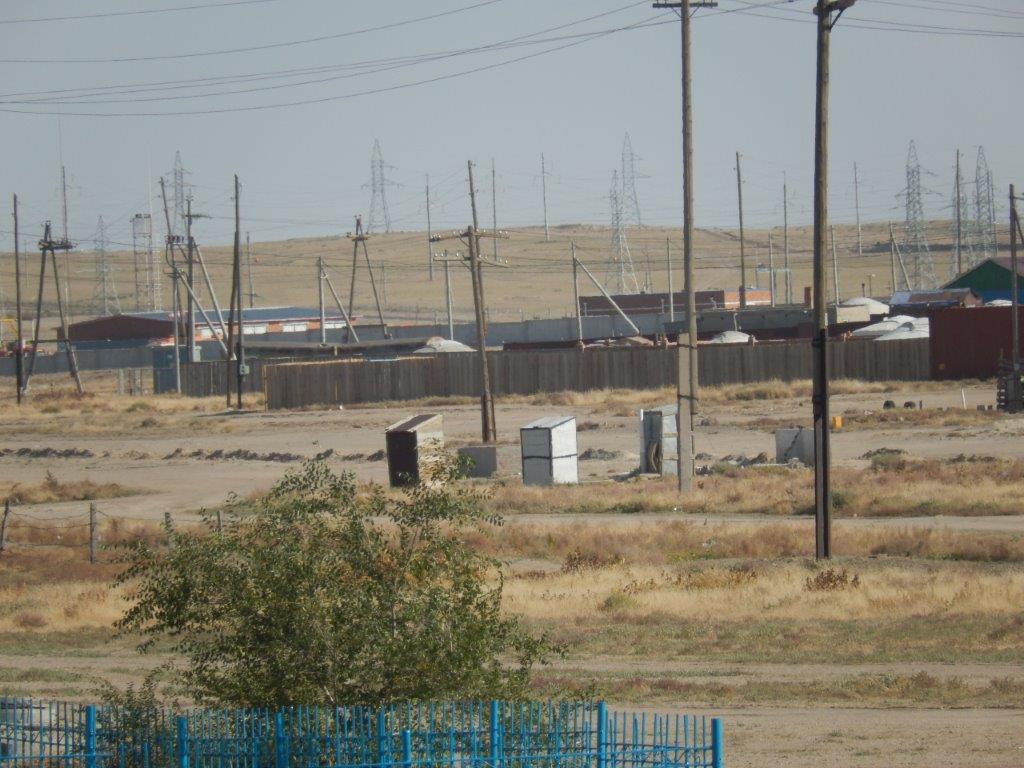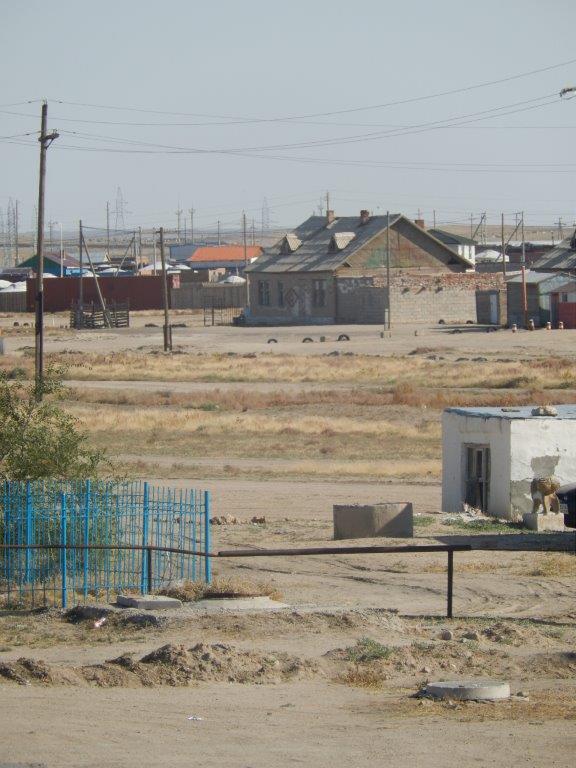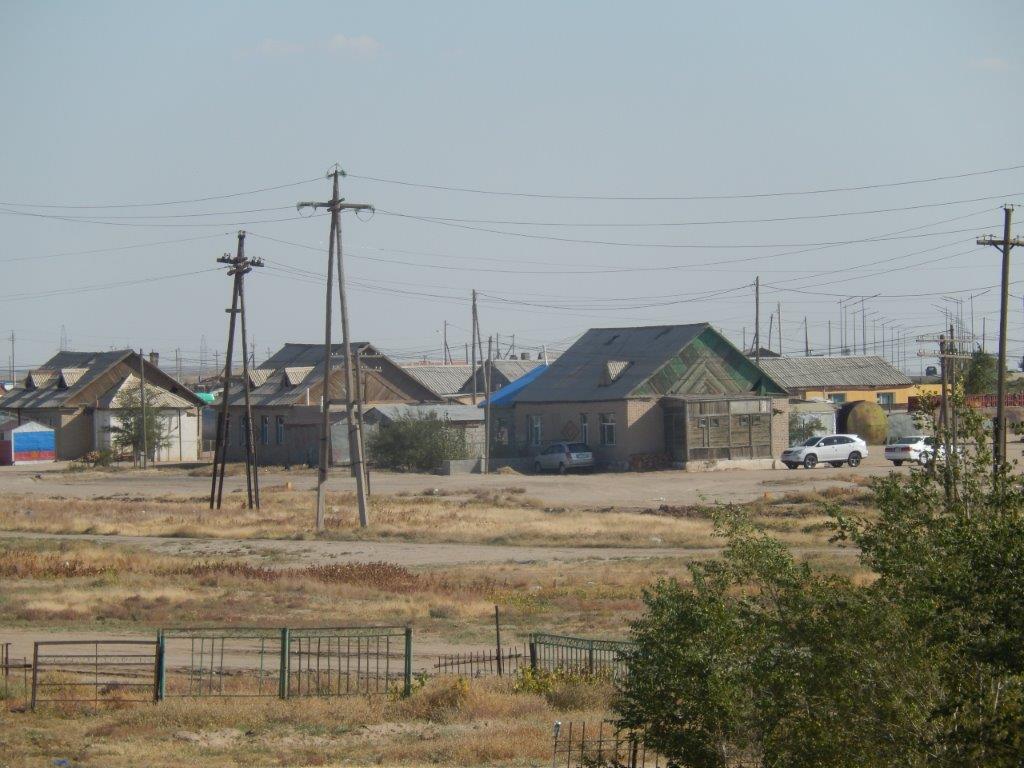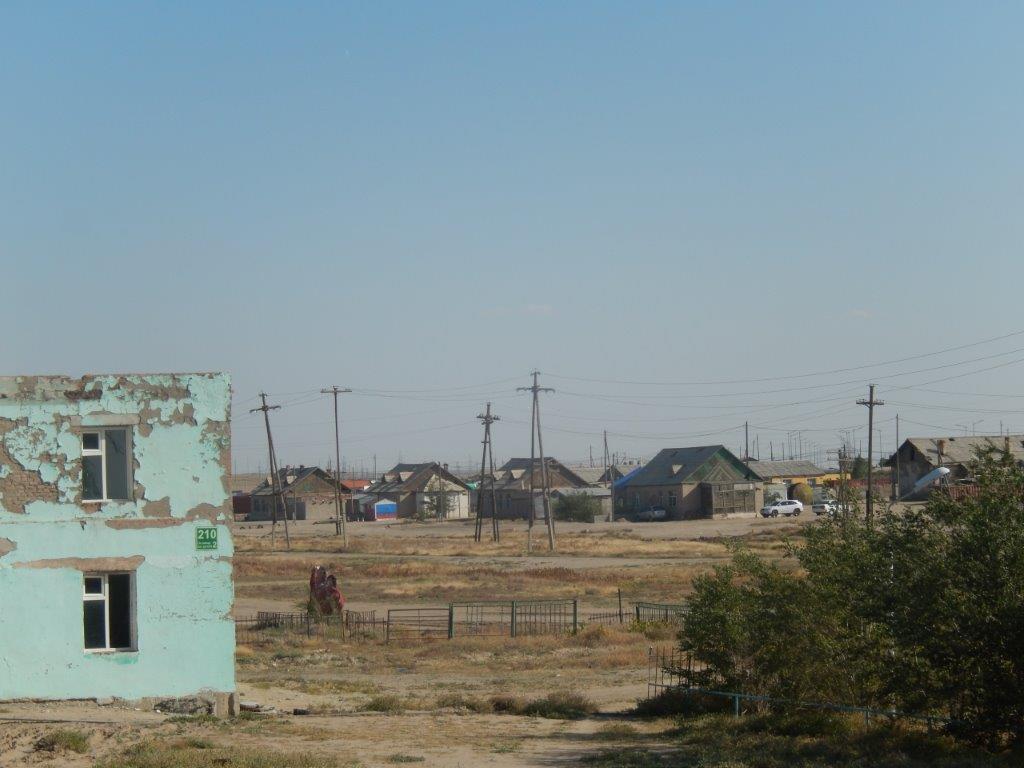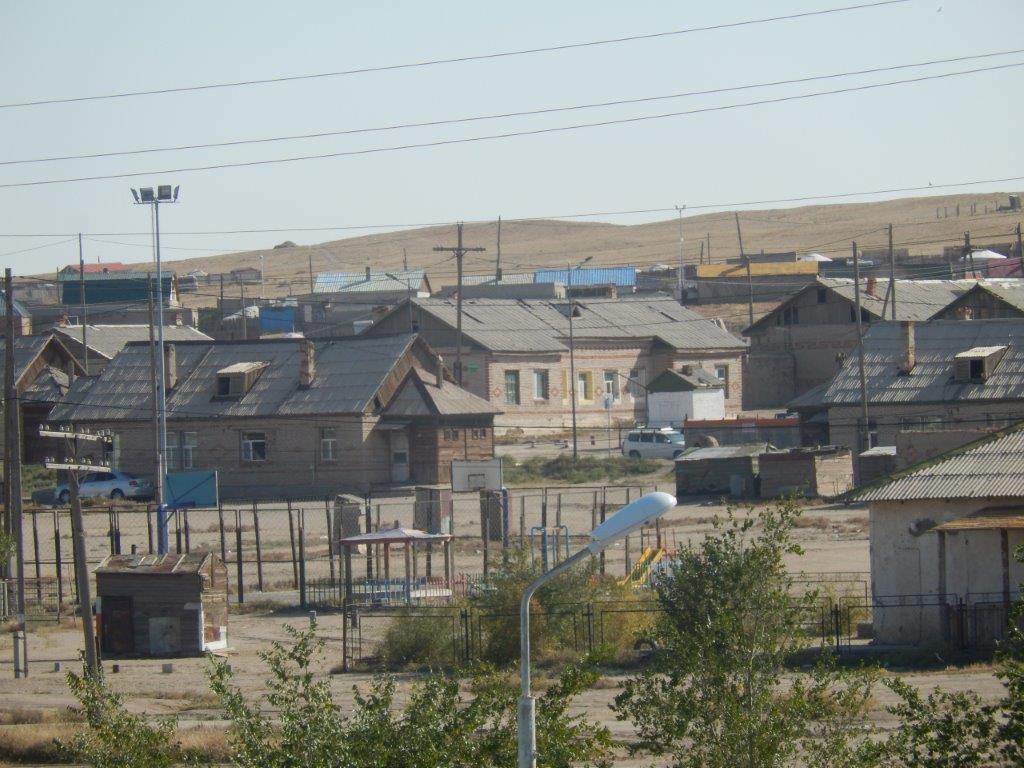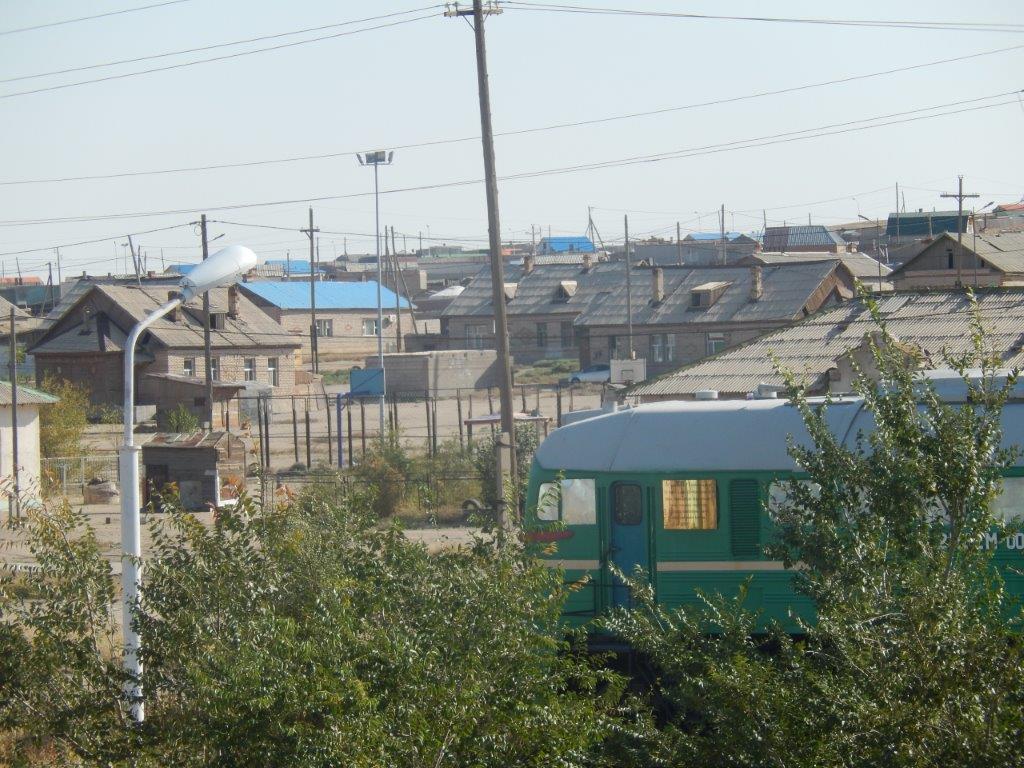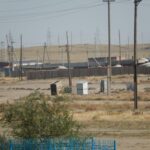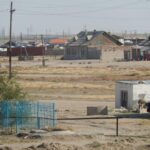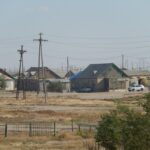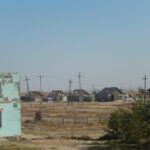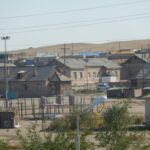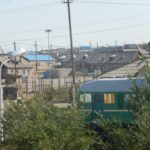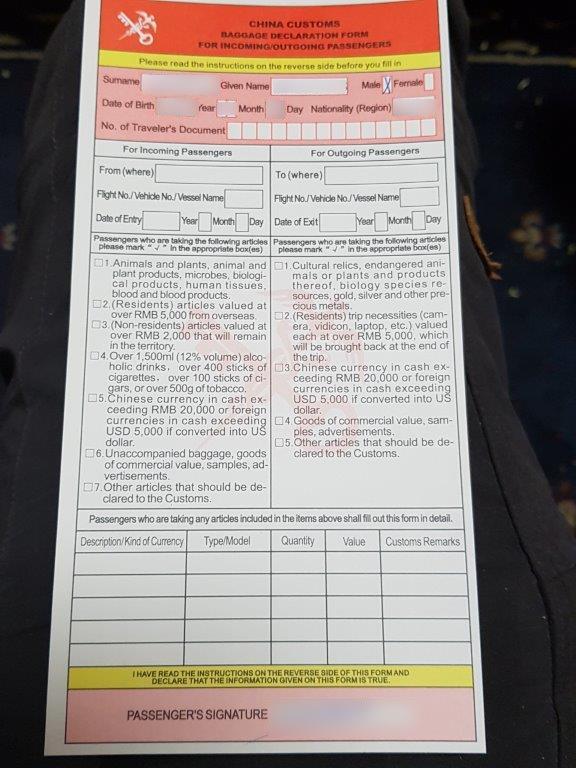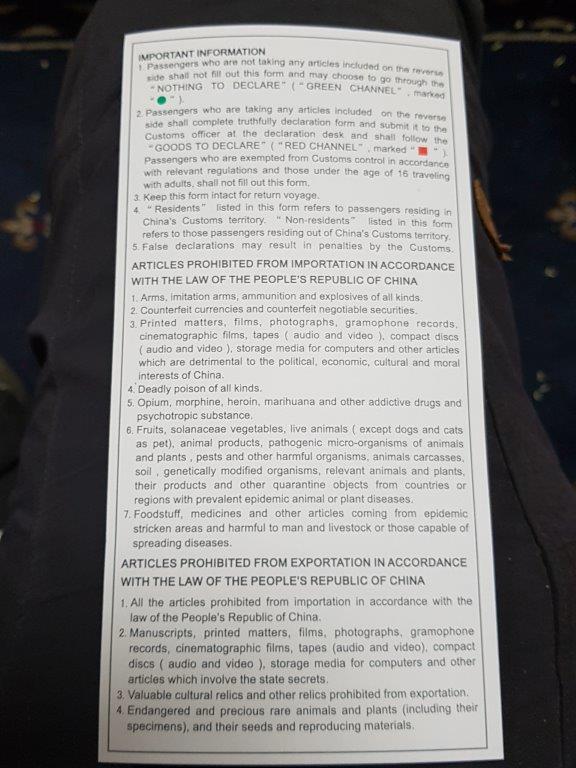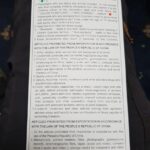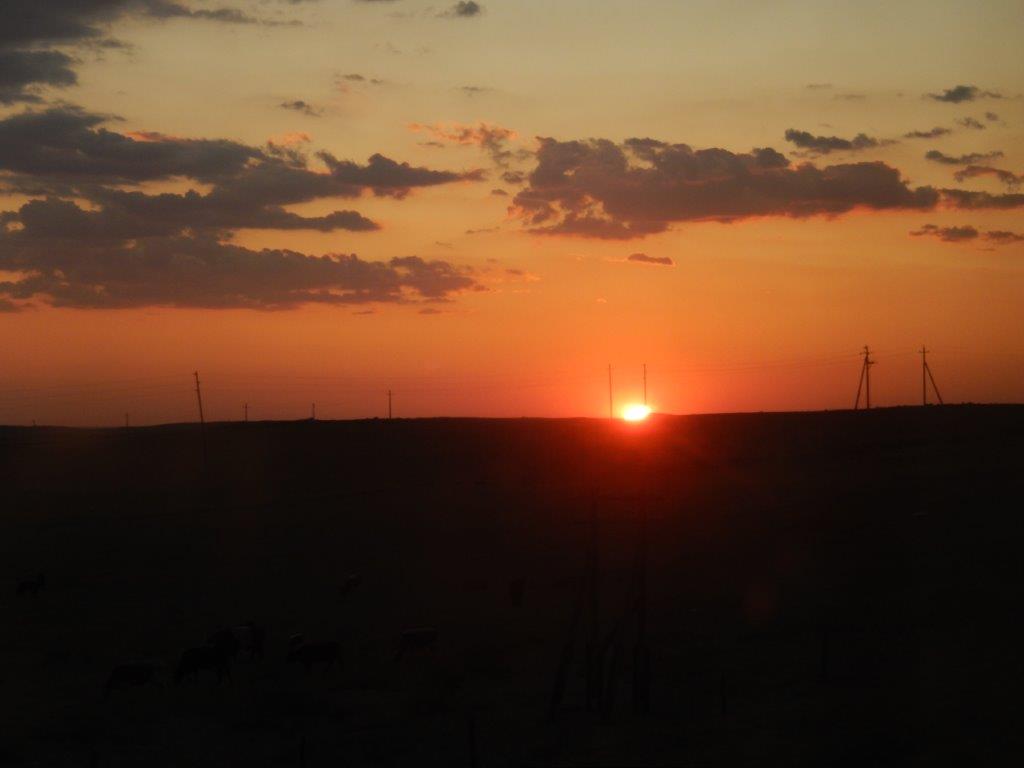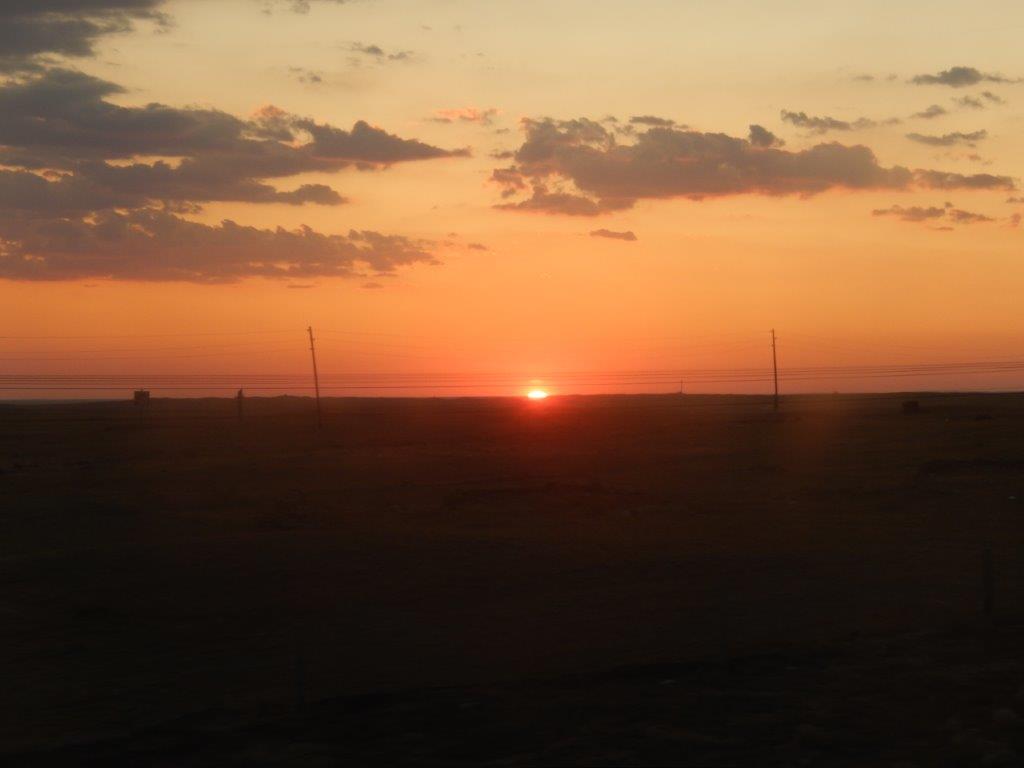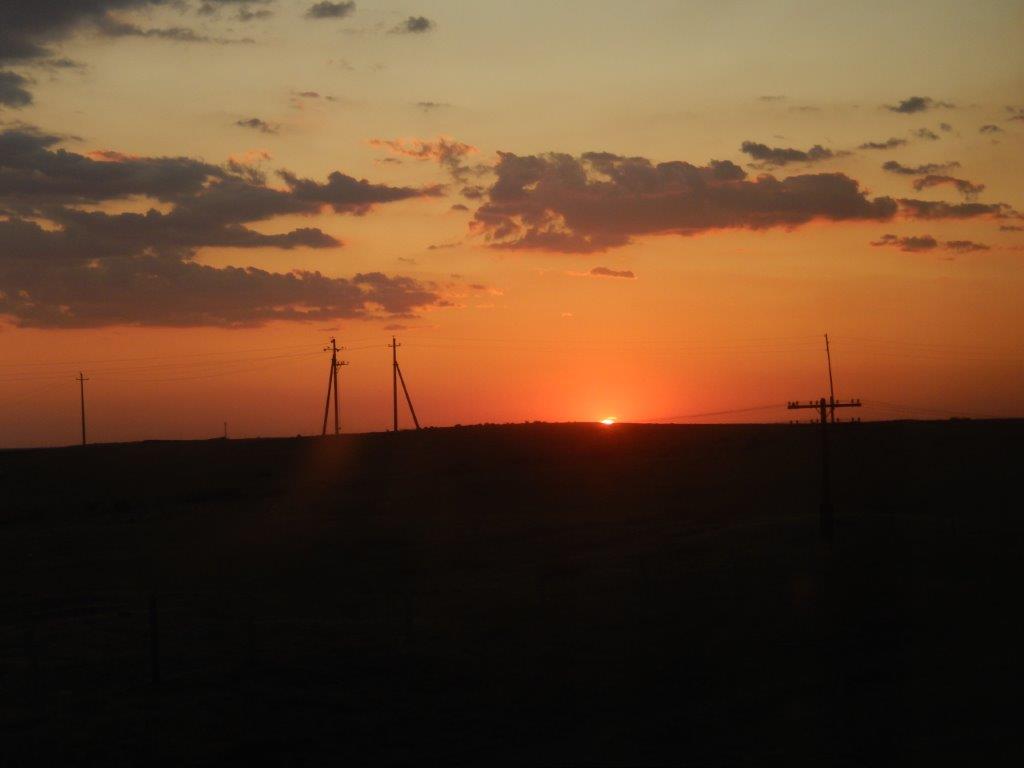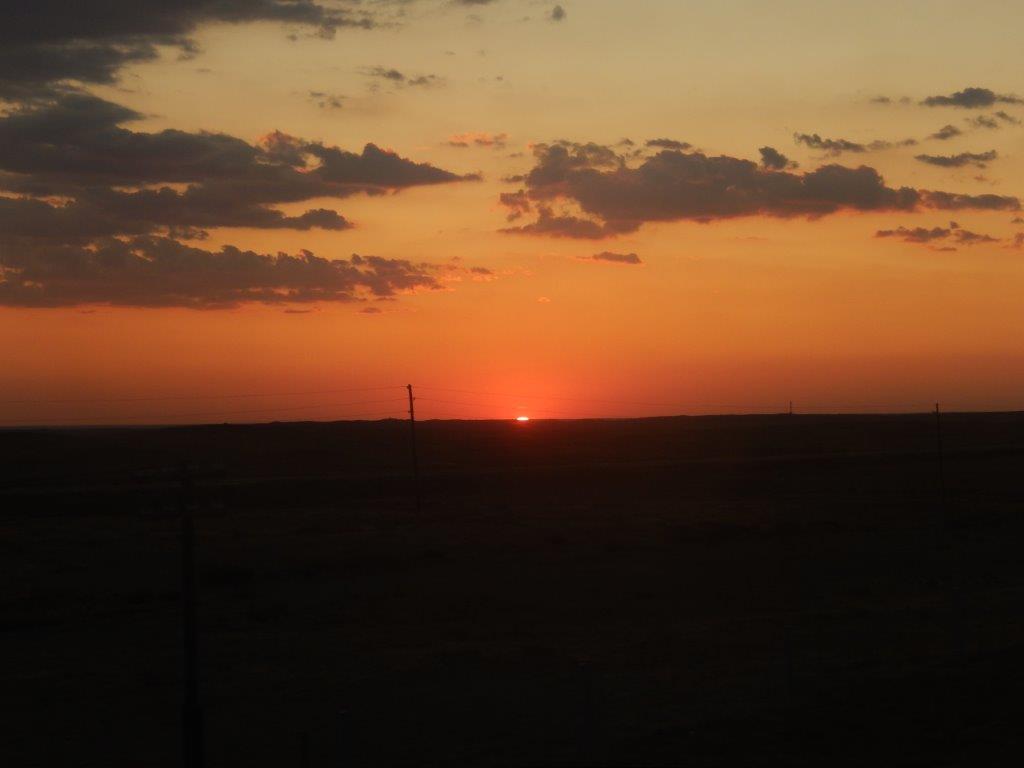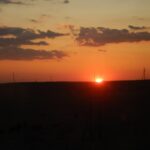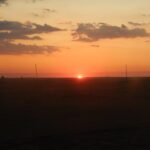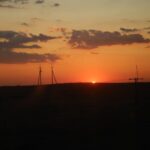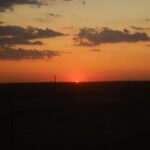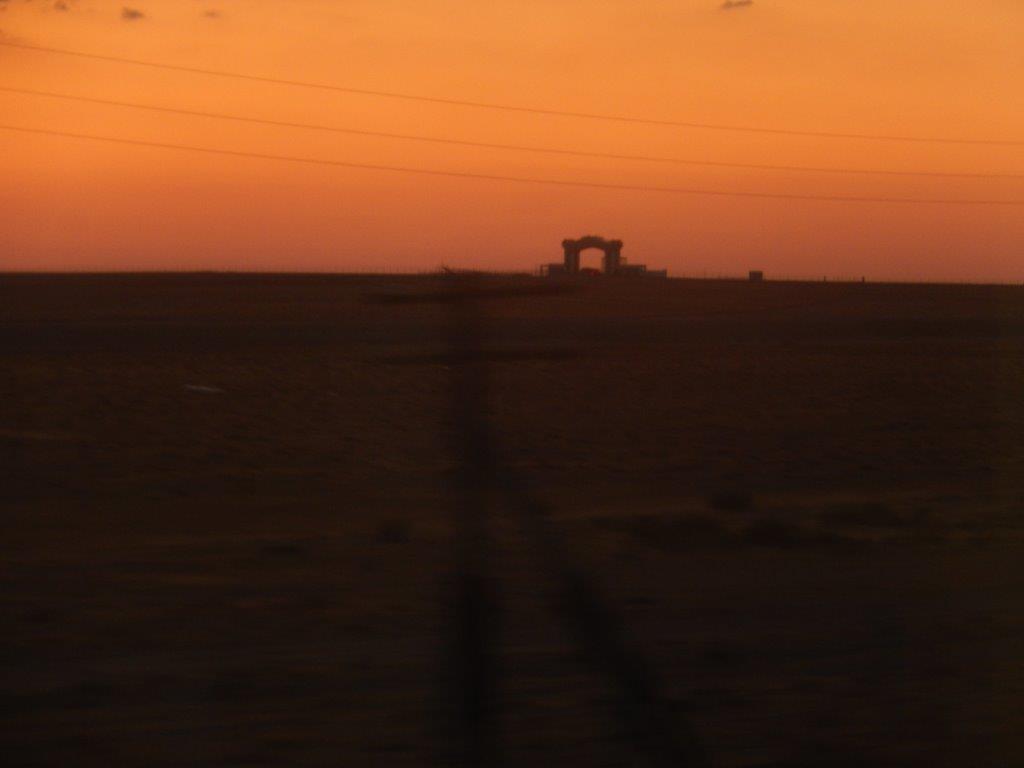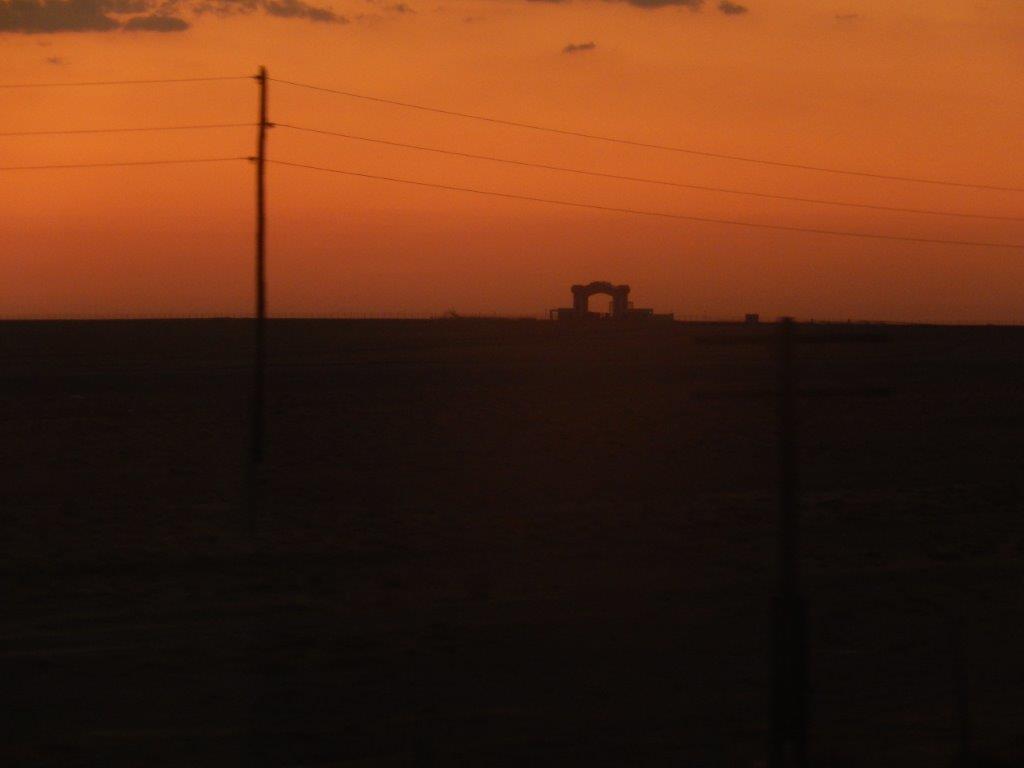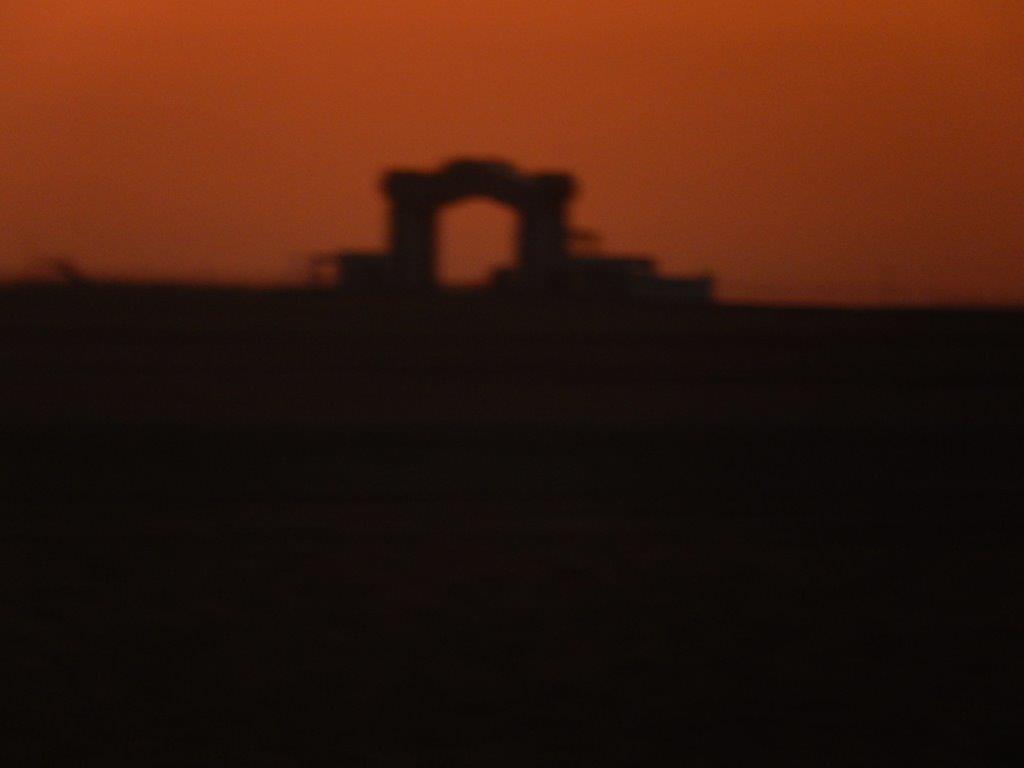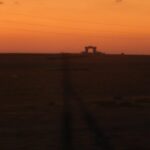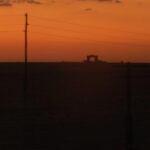Trans Mongolia Express: Through the Gobi desert into China
After a good sleep and a breakfast, it was time to leave for the railway station of UB, where The Wandelgek arrived early in the morning at about sunrise. This moment was a bit emotional, because the next stretch by train was also the very last one of his journey on the Trans Siberian and Trans Mongolian Railway. He had started a few weeks ago in Moscow (which already seemed a long time ago) and tomorrow in the afternoon he would finally arrive in Beijing the capital of China. He would leave Mongolia at about midnight.
But first things first. There was a bit time before the train was leaving so The Wandelgek could discover a bit of the railway station …
UB Central Railway Station
 Ulaanbaatar is the main railway station of Ulaanbaatar, the capital of Mongolia. It was half past 6 and the sun was just starting to rise when he arrived.
Ulaanbaatar is the main railway station of Ulaanbaatar, the capital of Mongolia. It was half past 6 and the sun was just starting to rise when he arrived.
The station is the center of regional and international traffic in Mongolia, and is the largest station in the country. The Trans-Mongolian Railway passes through the station. The Wandelgek was hopping on the Trans-Mongolian Express again after having hopped off at Darkhan in Northern Mongolia. He then went on a roadtrip through northern and central Mongolia, before boarding the train again at UB main railway station.

Near the station’s main building, was an old locomotive, similar to those that were exhibited on lots of the stations that The Wandelgek had visited while travelling through Russia. As this was the last train stretch before Beijing and because there was still time before the train left, The Wandelgek decided to make some pictures…
The Locomotive 2-10-0 (L-3167) is a steam engine locomotive. It carries a sign with the famous communist red star on its front.
Quite an impressive machine…
The sun was rising slowly as The Wandelgek sorted out in which wagon he had to board, but there was still plenty of time to explore a bit more.
Near a gate in a fence that separated the platforms from the streets of Ulaanbaatar, a cart, loaded with all the parts of a yurt was prepared for leaving the platform. All parts of a yurt, like the roof piece, the wooden pillars, the felt inner layer and the outer layer fabrics, the wooden floor elements, etcetera, were piled on one single cart. But itvwas too wide for the gate, which meant that the owner had to unload stuff, then move the cart through the gate and then reload the cart again. It is quite entertaining to watch that process…
After a while The Wandelgek decided to have a look at the diesel locomotive in front of the train, that were going to do all the heavy work on this last journey…
It was the 22AGAL-010, but this train was not pulled by a single locomotive but by 2 locomotives…
Then it was time to board the Trans Mongolia Express for the start of the last stretch. This specific train was not a pass by train coming from Ulan Ude or Moscow. This one started in Ulaanbaatar with all new travellers boarding and finished in Beijing the next day.
Itinary Ulaanbaatar to Beijing

498km/309ml Jining
371km/231ml Dàtóng
193km/120ml Zhāngjiākǒu
73km/45ml Bādálǐng
0km/0ml BEIJING
Tickets
The 1st stretch of the journey went through an area of grasslands and hills, which was still part of Central Mongolia…

The trains keeps going south for a few hours and slowly the landscape becomes more steppe-like/desert -like. After a few hours the train arrives at:
Choir
 Choir (Mongolian: Чойр) is a city in Mongolia. It is the capital of Govisümber Province, in the east-central part of the country. Choir is officially known as Sümber sum of Govisümber Province.
Choir (Mongolian: Чойр) is a city in Mongolia. It is the capital of Govisümber Province, in the east-central part of the country. Choir is officially known as Sümber sum of Govisümber Province.
Choir was a military base during the Soviet period. In 1989, the Soviet anti-aircraft missile units left Choir. The longest runway in Mongolia, now abandoned, is located 25 km N from Choir, a relic of that period. In 1992, the military cantonment passed into the jurisdiction of Govisümber Province, according to the 1992 constitution. Near the railway station is a statue commemorating Mongolia’s first cosmonaut, Jügderdemidiin Gürragchaa.
Location
Choir lies in the Choir Depression, a lowland strip about 150 km long and 10 to 20 km wide, about 500 m lower than the surrounding upland. It lies at an altitude of 1269 m.
Uranium prospecting began in the Choir Depression in 1955, and the Haraat deposit (of uranium trioxide), identified in 1970, began major drilling in 1988. Following new discoveries in 1997, there is estimated to be 8165 t (18 million lbs.) of uranium trioxide in the depression. In early 1994, the area was licensed to the Gurvan Saihan Joint Venture, with a 70% interest by Denison Mines, and 15% each from the Mongolian government and a Russian state geological concern. Rail lines connect the Trans-Mongolian Railway with the mine.
The Gobi Desert
South of Choir, the Trans Mongolia Express slowly enters the desert steppes of the eastern Gobi Desert.
The Gobi Desert is a large desert or brushland region in East Asia. It covers parts of Northern and Northeastern China and of Southern Mongolia. The desert basins of the Gobi are bounded by the Altai Mountains and the grasslands and steppes of Mongolia on the north, by the Taklamakan Desert to the west, by the Hexi Corridor and Tibetan Plateau to the southwest and by the North China Plain to the southeast. The Gobi is notable in history as the location of several important cities along the Silk Road.
Geography
The Gobi measures over 1,600 km (1,000 mi) from southwest to northeast and 800 km (500 mi) from north to south. The desert is widest in the west, along the line joining the Lake Bosten and the Lop Nor (87°–89° east). It occupies an arc of land in area as of 2007; it is the sixth-largest desert in the world and Asia’s second largest. Much of the Gobi is not sandy but has exposed bare rock.
In its broadest definition, the Gobi includes the long stretch of desert extending from the foot of the Pamirs (77° east) to the Greater Khingan Mountains, 116–118° east, on the border of Manchuria; and from the foothills of the Altay, Sayan, and Yablonoi mountain ranges on the north to the Kunlun, Altyn-Tagh, and Qilian mountain ranges, which form the northern edges of the Tibetan Plateau, on the south.
A relatively large area on the east side of the Greater Khingan range, between the upper waters of the Songhua (Sungari) and the upper waters of the Liao-ho, is reckoned to belong to the Gobi by conventional usage. Some geographers and ecologists prefer to regard the western area of the Gobi region (as defined above): the basin of the Tarim in Xinjiang and the desert basin of Lop Nor and Hami (Kumul), as forming a separate and independent desert, called the Taklamakan Desert.
Archeologists and paleontologists have done excavations in the Nemegt Basin in the northwestern part of the Gobi Desert (in Mongolia), which is noted for its fossil treasures, including early mammals, dinosaur eggs, and prehistoric stone implements, some 100,000 years old.
Trainlife
Life on the train is a constant succession of looking through windows, drinking tea or coffee, eating noodles, talking to other passengers about their travel experiences, reading a travelguide or a book and listening to music…
At about 15.00 hours, the train reaches…
Sainshand
 Sainshand (Mongolian: Сайншанд; ᠰᠠᠶᠢᠨᠱᠠᠩᠳᠠ) is the capital of Dornogovi Province in Mongolia. It is located in the eastern Gobi desert steppe, on the Trans-Mongolian Railway.
Sainshand (Mongolian: Сайншанд; ᠰᠠᠶᠢᠨᠱᠠᠩᠳᠠ) is the capital of Dornogovi Province in Mongolia. It is located in the eastern Gobi desert steppe, on the Trans-Mongolian Railway.
The railway station on the Trans-Mongolian Railway is found in the northern part. A 7 kilometres (4.3 mi) long section to the west contains the ruins of an abandoned Soviet military base.
Inside was a sober hall, relatively cool. The clocks above the exit showed Moscow time versus Sainshand and Beijing time which are similar, because they are in the same time zone. From now the Trans Mongolian was going south and there was no more other time zone to travel into. The large gap in time with Moscow showed how far The Wandelgek had travelled already.
The Wandelgek walked oit and saw a square with a monument. On top of the monument was a symbol that he had seen before on the flag of Mongolia and painted on a monastery door.
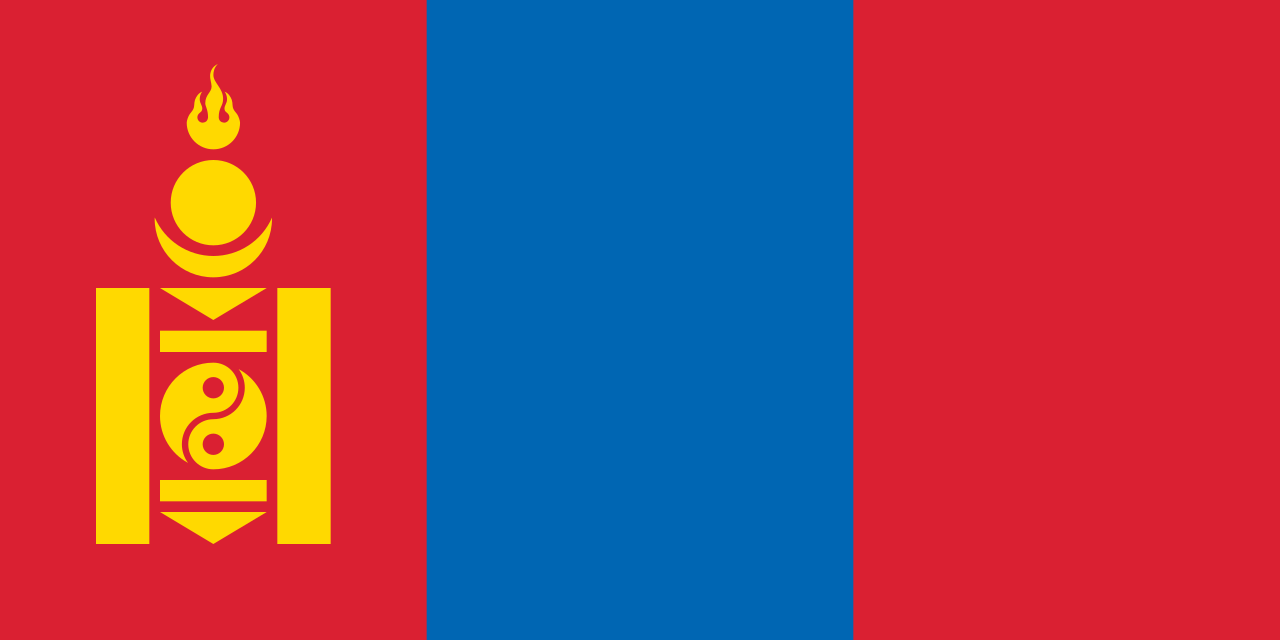
See this blogpost for an explanation: Cultural Citytrip in Ulaanbaatar 2: The Buddhist Monastery of Ganden
Language wise the Mongolian alphabet uses cyrillic letters which differ from our arabic alphabet. The name of Sainshand was attached in cyrillic to the station building.
Outside the sun was not too hot. Sainshand was quite deep into the Gobi desert, but the Gobi is not like the Sahara or like the much hotter Taklamakan. It is actually a cold desert. What makes it a desert nonetheless is not the temperature but the scarseness of rainfall.
Sainshand was a bit of a collection of ramshackle buildings in a dust infested desert scape and The Wandelgek loved it 😍😍😍
There were all sorts of trains around the station, some for local transport…
The schedule of the Trans Mongolian said that about an hour after artival, it would continue its journey and it is common knowledge that departure times are never seen as an exact science, so it is wise to not stray off to far from the train and to get back on the platform early…
The provodnitsas were signaling that thectrain was going to leave so The Wandelgek boarded again.
Trainlife 2
Looking outside through a train window, seeing the landscape slowly pass by is actually the very best teevee show ever conceived. No Netflix, HBO or Disney Plus series can ever hope to top that show.
The Gobi does not have a lot of sand dunes but there was this one instance where The Wandelgek did see some of those…
The best parts of a desert are not neccesarily the flat parts. Most people are more attracted to the dunes or to rocky desert scapes…

There are not that much spots during the Trans Siberian and Trans Mongolian trajectory where you can see the train from the train, but The Wandelgek was lucky enough to spot it at least once while travelling through the Gobi desert….
Another thing you can do while sitting in your cabin is filling in the forms for customs, later that evening and night. You need to declare what you are exporting from Mongolia and importing into China, goods and money.
After hours of travelling through the desert, the sun finally starts to set.
It os almost like looking at a movie but it is so much better
After sunset, there is still a long time of twilight. The Wandelgek looked out of the window and suddenly saw this strange gate, seemingly in the middle of nowhere. It could be that there is a road parallel to the railway and the gate could be a border gate of a community or a region, much like the one that The Wandelgek paused at near Erdenet in northern Mongolia. See: On the road again: About yaks and the Mongolian town of Erdenet
Slowly it was getting really dark, as the train kept going south.and after many hours the train reached the border at…
Zamyn Üud (Mongolia) – Erenhot (China)
Zamyn Üud (Mongolia)
At about 21 hrs, The Wandelgek arrived at the border station of Zamyn Üud. Mongolian Border guards came into the train and collected everyones passports and some forms we needed to fill in about what we were taking out of the country (declaration of goods and a summary of money). Then they returned our passports including an exit stamp and the train was allowed to leave Mongolia towards Erenhot/Erlian railway station in China.
Erenhot/Erlian (China – Inner Mongolia)
 At about 22 hrs, The Wandelgek arrived at the border station of Erenhot/Erlian in China. Everyone had to leave the train including all luggage, meaning that the entire cabin had to be emptied. After this had happened, Chinese border patrol entered the train accompanied by dogs, checking every cabin for drugs and smuggled goods. The travellers had to enter a large hall where they were requested to wait until called for. Then every traveller was placed in a queu and had to pass through an electronic checkpoint. Luggage had to pass seperately via a conveyer belt and was scanned. The electronic check meant, scanning your passport and being photographed. When The Wandelgek was still at home, filling in all those forms, to apply for a chinese visa, he also had to fill in a Consent For Processing Biometric Data Form and send in a passport photo on which very strict conditions applied. His 1st picture was refused and a 2nd one had to be made to get through the application process. These biometric data were now checked by customs.
At about 22 hrs, The Wandelgek arrived at the border station of Erenhot/Erlian in China. Everyone had to leave the train including all luggage, meaning that the entire cabin had to be emptied. After this had happened, Chinese border patrol entered the train accompanied by dogs, checking every cabin for drugs and smuggled goods. The travellers had to enter a large hall where they were requested to wait until called for. Then every traveller was placed in a queu and had to pass through an electronic checkpoint. Luggage had to pass seperately via a conveyer belt and was scanned. The electronic check meant, scanning your passport and being photographed. When The Wandelgek was still at home, filling in all those forms, to apply for a chinese visa, he also had to fill in a Consent For Processing Biometric Data Form and send in a passport photo on which very strict conditions applied. His 1st picture was refused and a 2nd one had to be made to get through the application process. These biometric data were now checked by customs.
After getting through customs which all in all took about 1 hour, The Wandelgek had to wait for another 4 hrs, before being allowed to return to the train.
The whole proces of passing this border took 5 hrs. This was the same length as when The Wandelgek passed the border of Kazakhstan into China in 2004 (also by train). See my blogpost: The Kazakh Steppes: 40 hrs. by train from Almati to Dostyq
The most important reason why this takes soooo very long, is because (and this is done for military, strategic reasons), the track gauges (width of the tracks) in the old Sovjet Union differs from that in China. This implies that the bogies (wheels underneath the carriages) need to be replaced, which is a giant operation. For this, the train is moved to a giant hall. The wide of the Sovjet Union railway system is broader then that of China.

A= Russian track width, B = Chinese track width
The train moves over the tracks. At the border both, the Russian and the Chinese track are combined (A &B). The train stops where it is totally above a piece of track where both track widths are combined. Now large jacks are positioned underneath the train carriages. These are detached from the bogies and lifted up by the jacks. Now the russian bogie sets with the wider track width are pulled back towards Mongolia and the new bogies with the chinese track width are pushed underneath the carriages. ..
The carriages are going down again and attached to the new sets of bogies and the jacks are removed. The train now returns to the stations platform (where it can drive to, because there is a combination of Russian and chinese track width.
The passengers are now allowed to enter the train which will leave the station of Erlian/Erenhot to further enter China’s province of Inner Mongolia.
Conclusion about Mongolia
Mongolia is wild. It is untamed. It is almost empty. Most People live in town, and most of those in UB. There is a clear difference between urban Mongolians and nomadic Mongolians in financial standard, culture (music, dance and song), cuisine, education and overall life style. Differences can be really huge. Mongolian nature is sublime and breathtaking. The Wandelgek loved travelling through the countryside and Mongolia’s nature that harbors an astounding amount of animals. C=Although he did like city life in UB too, there were two things that bothered him and that do seem problematic. The smaller towns are really not that interesting for people to live, except for economic reasons. Culture, cuisine, entertainment etcetera, is almost all in UB. 2nd the air pollution in UB is enormous. The Wandelgek drove passed UB when he saw this dark gray blanket of smokey fog hanging over town. It is caused by all the small coal and bricket stoves that are mainly found within the many yurts in town. The people are very friendly and helpfull whenever needed or possible, specially the nomads value foreign visitors to their country.



